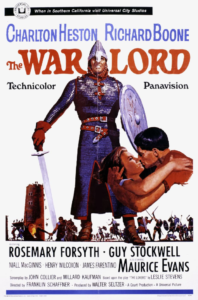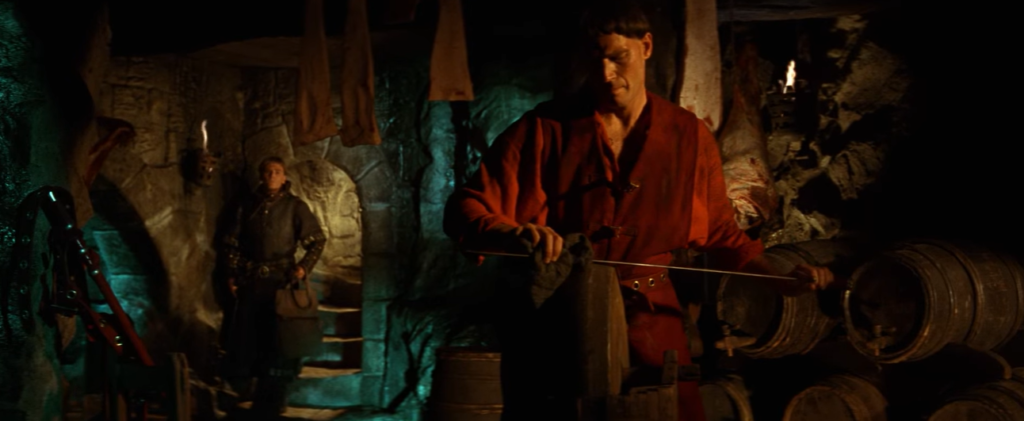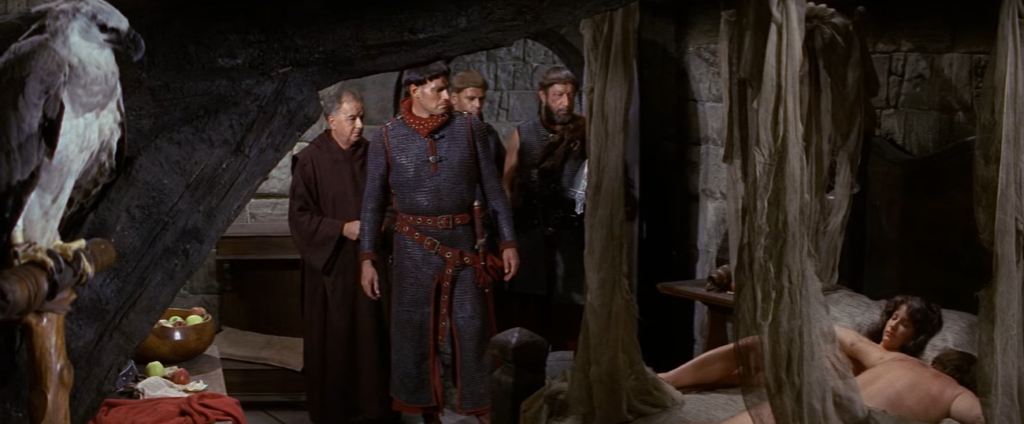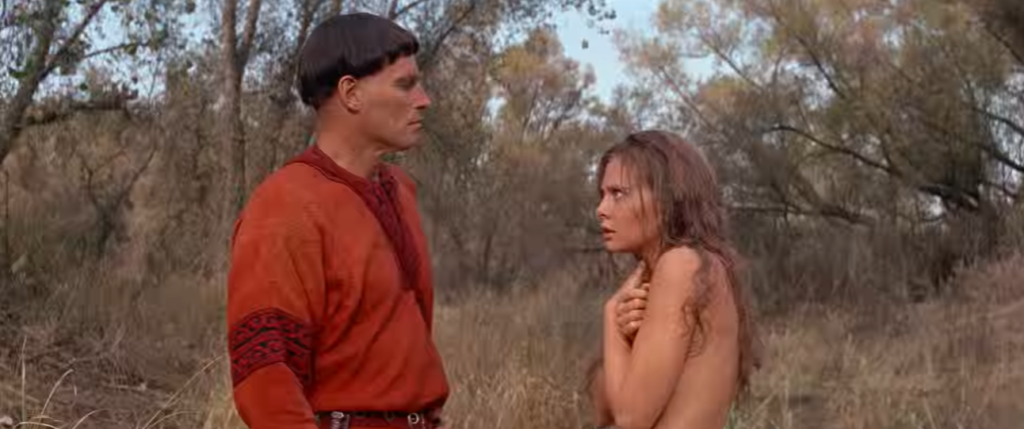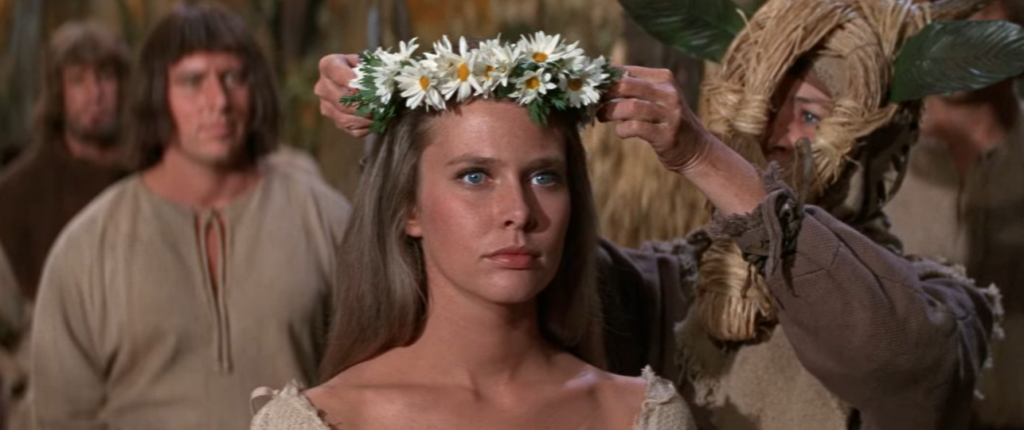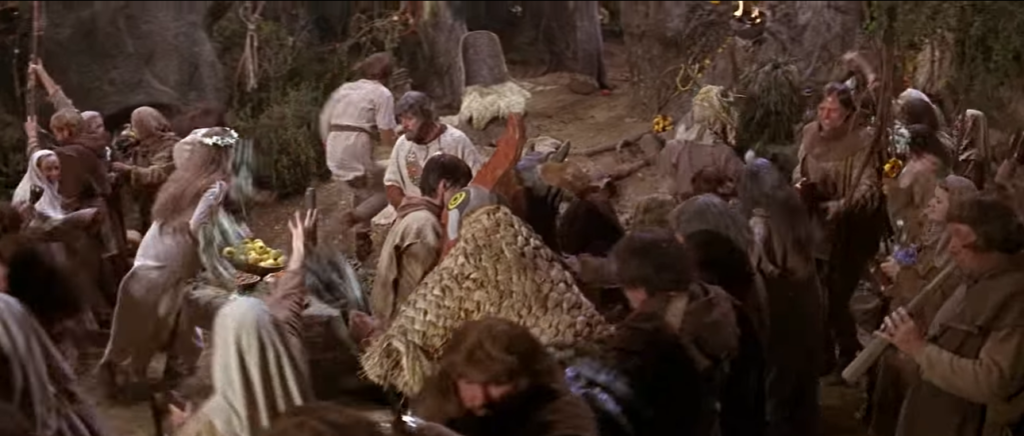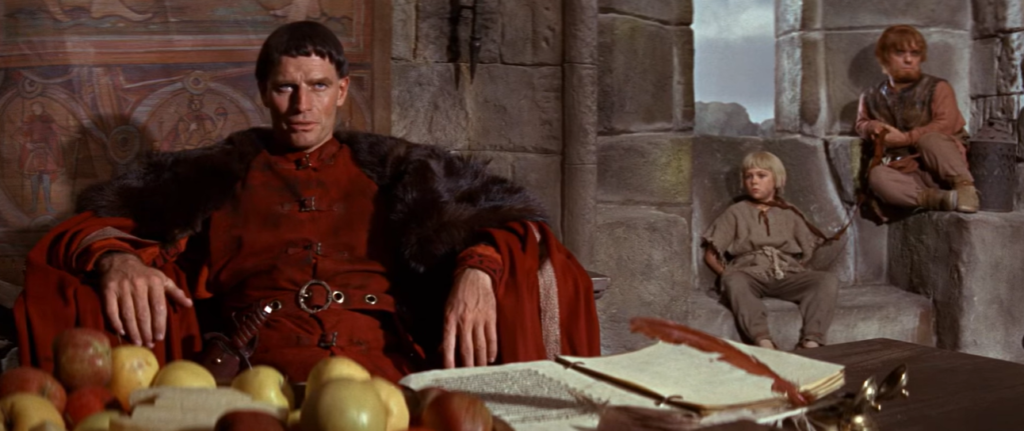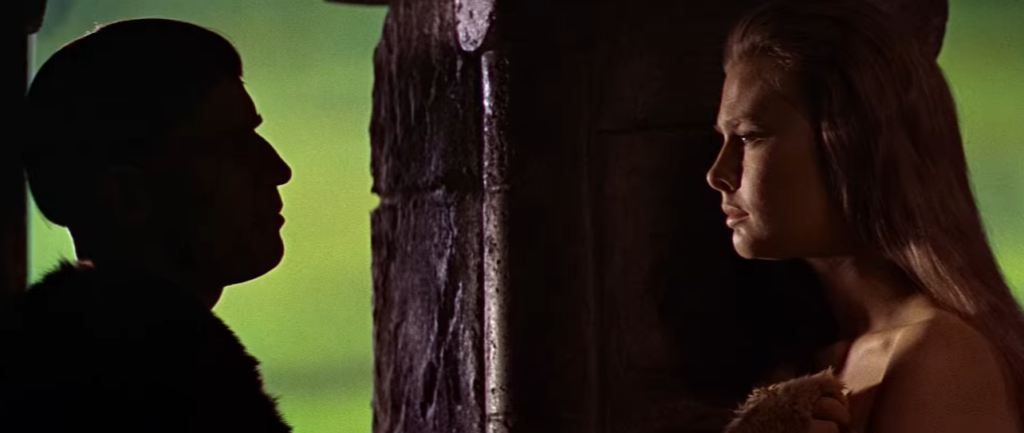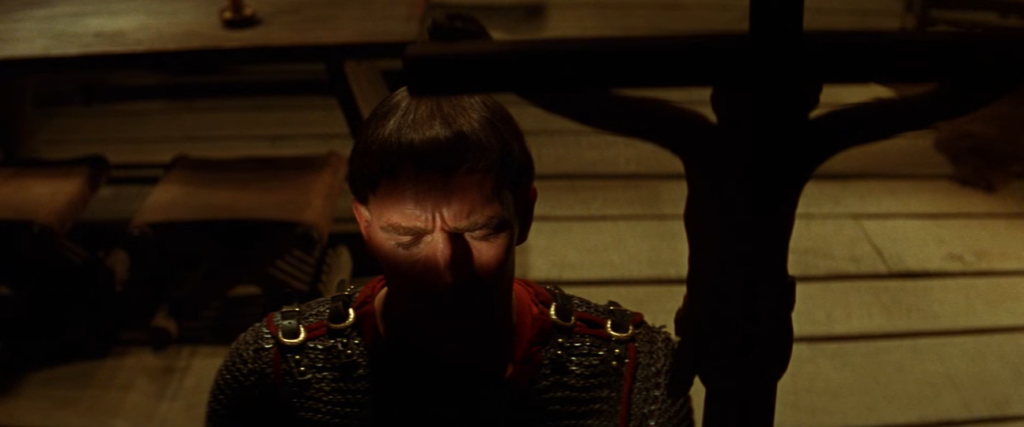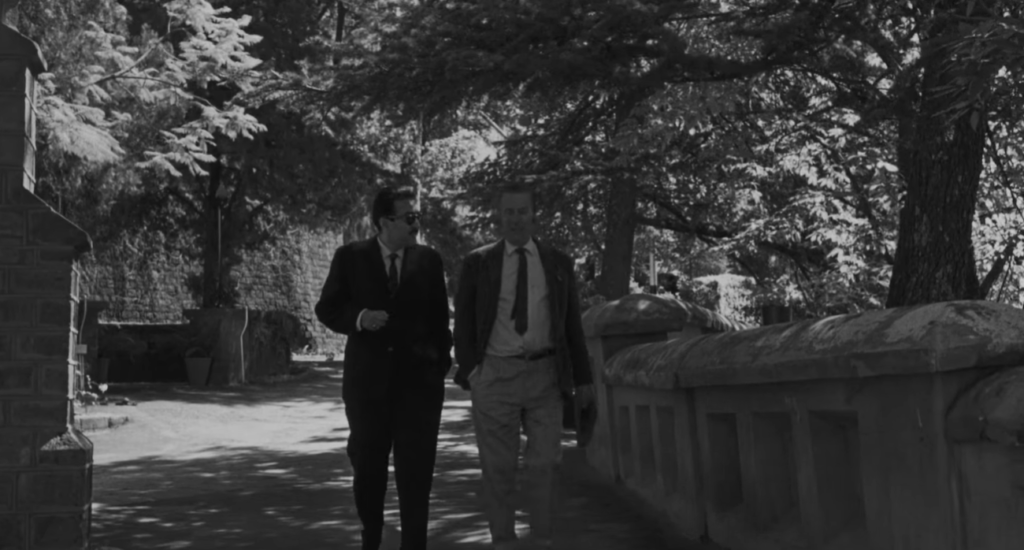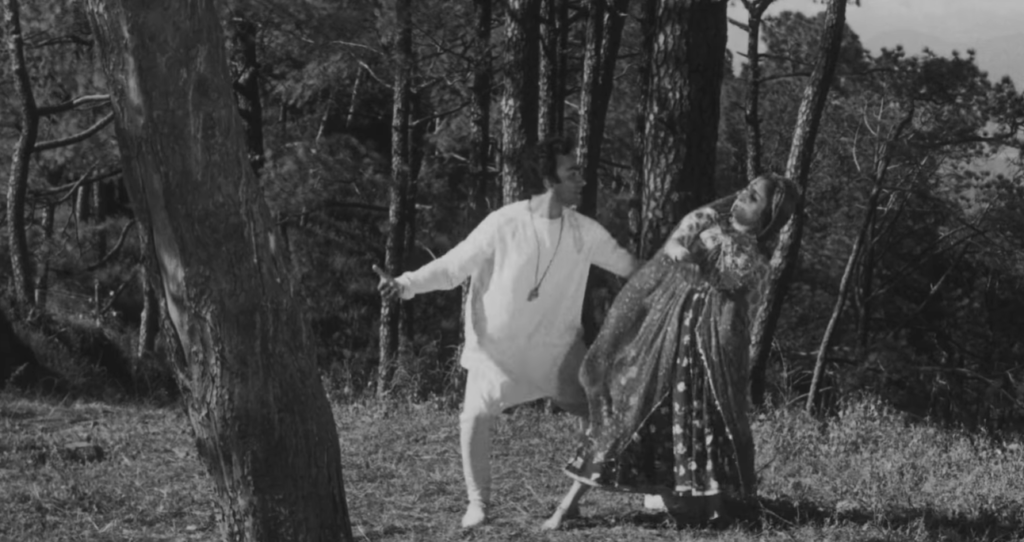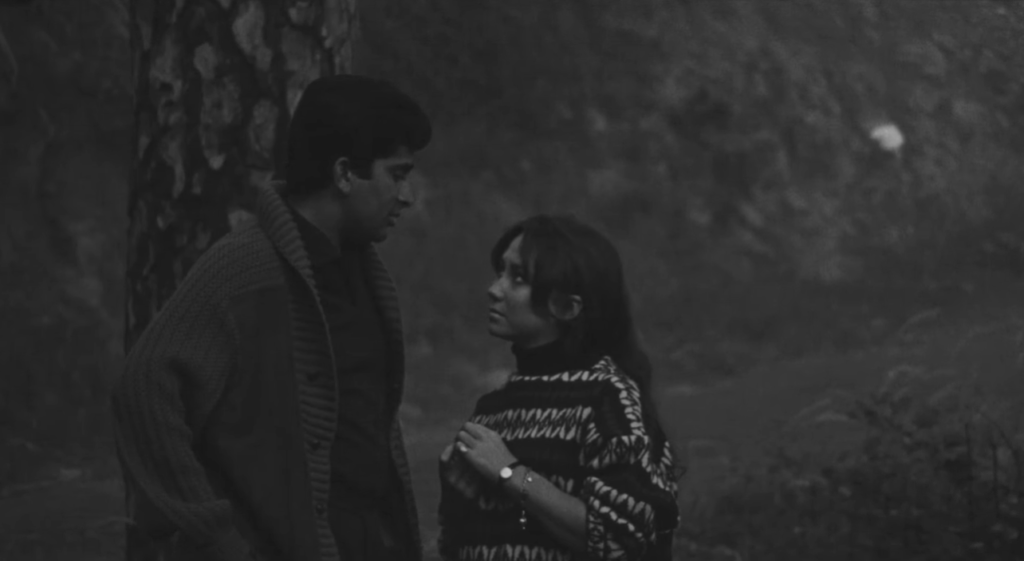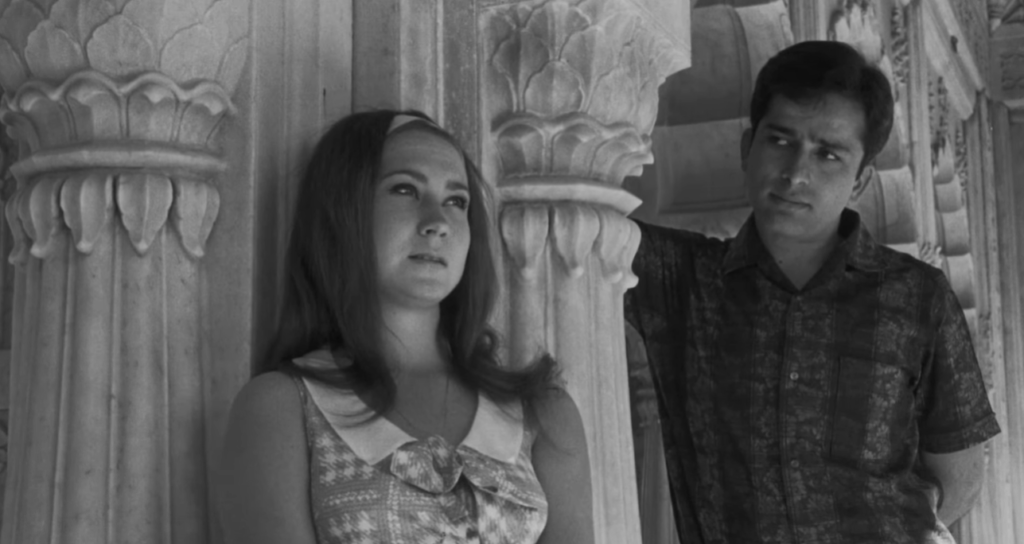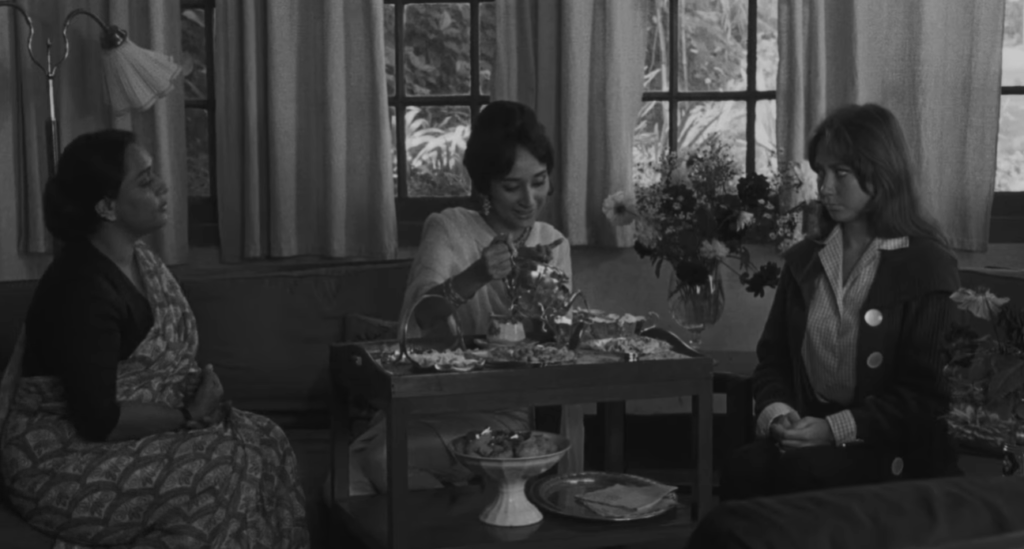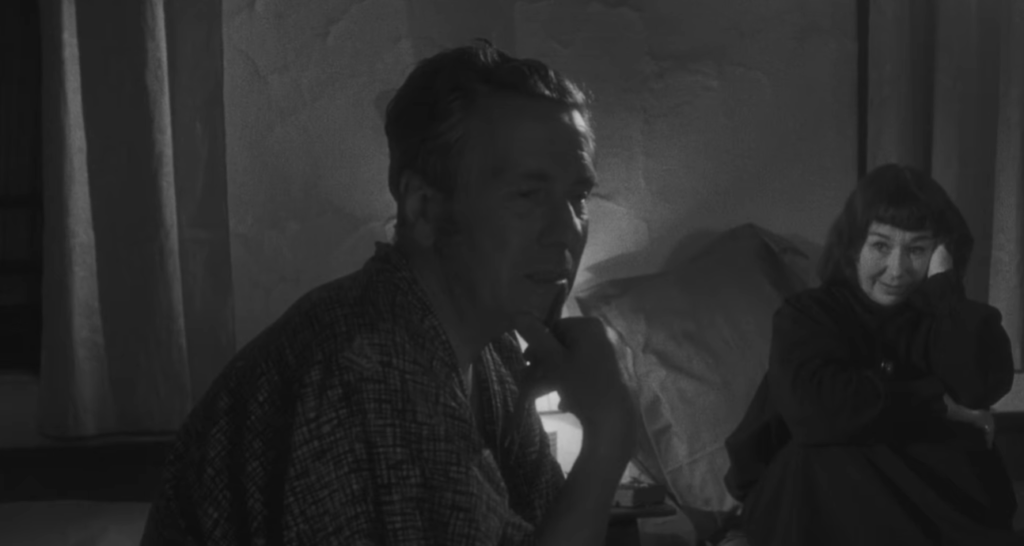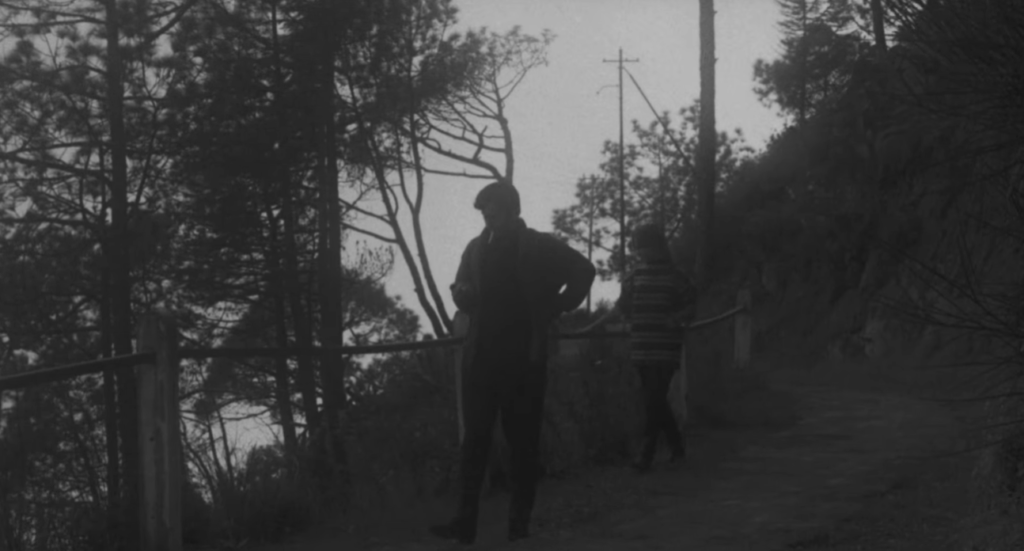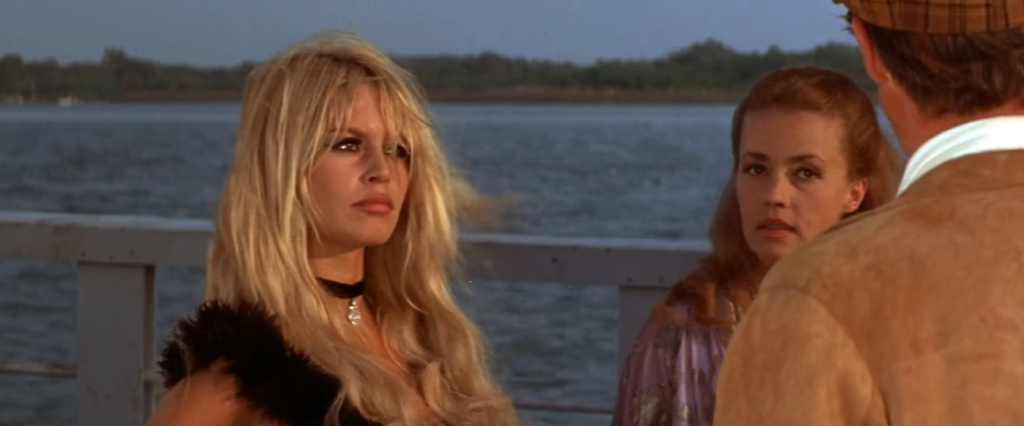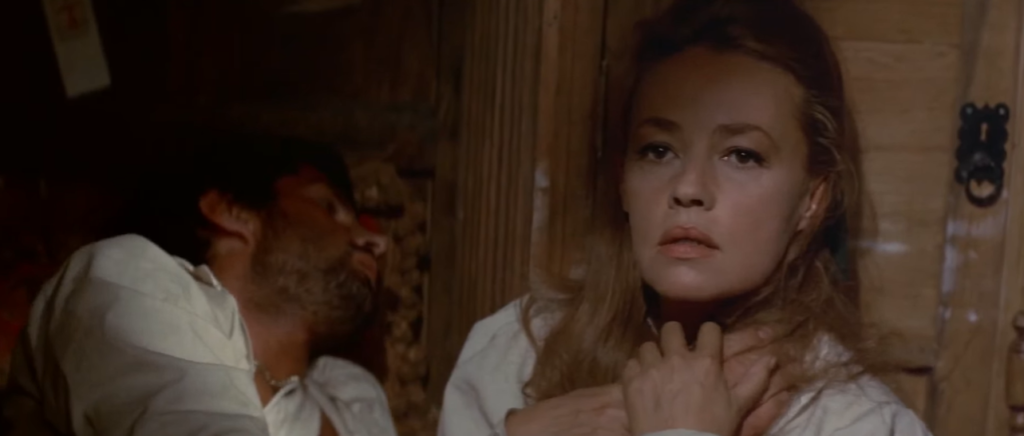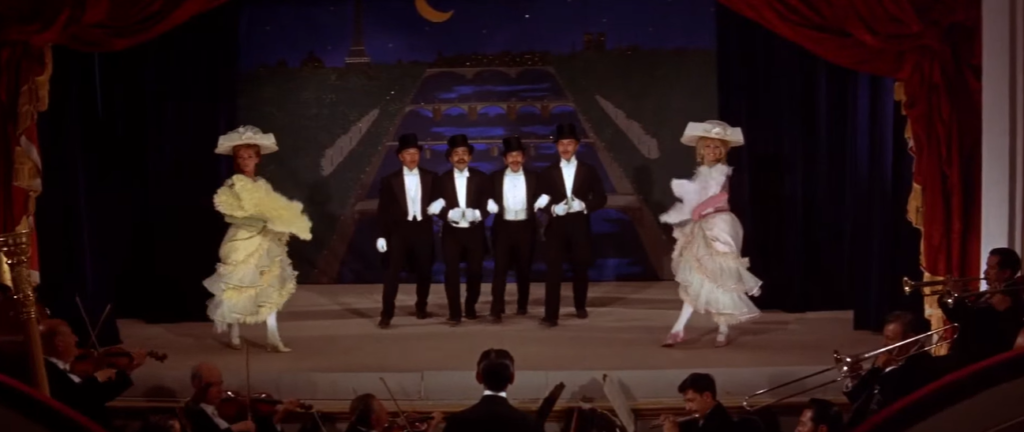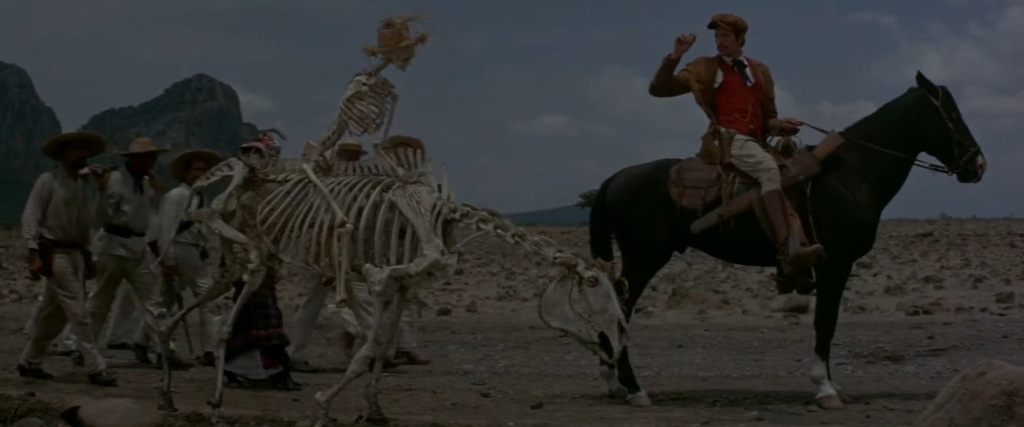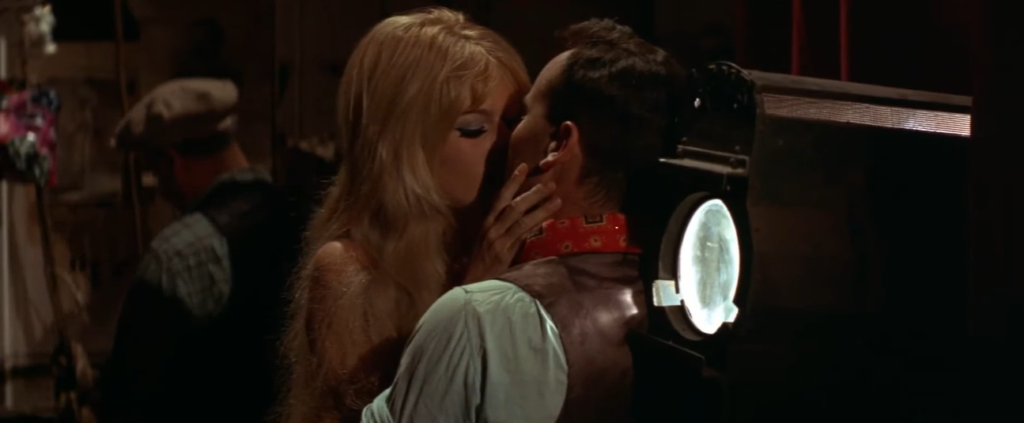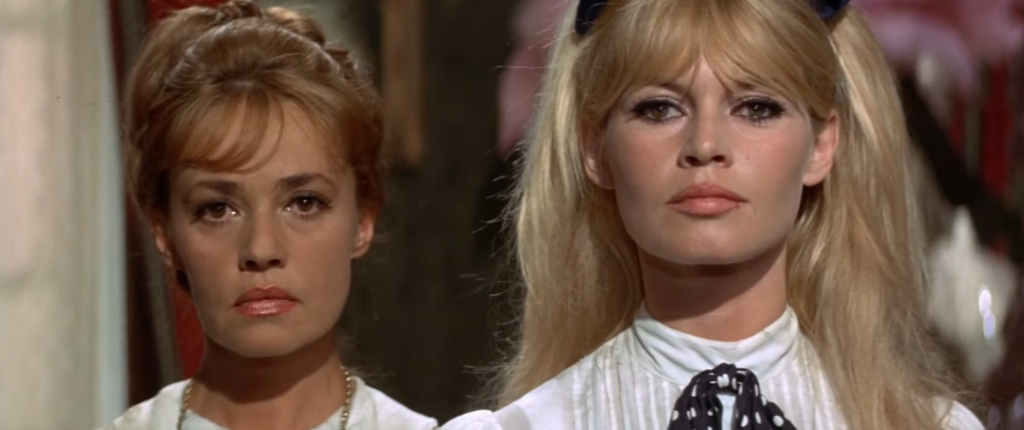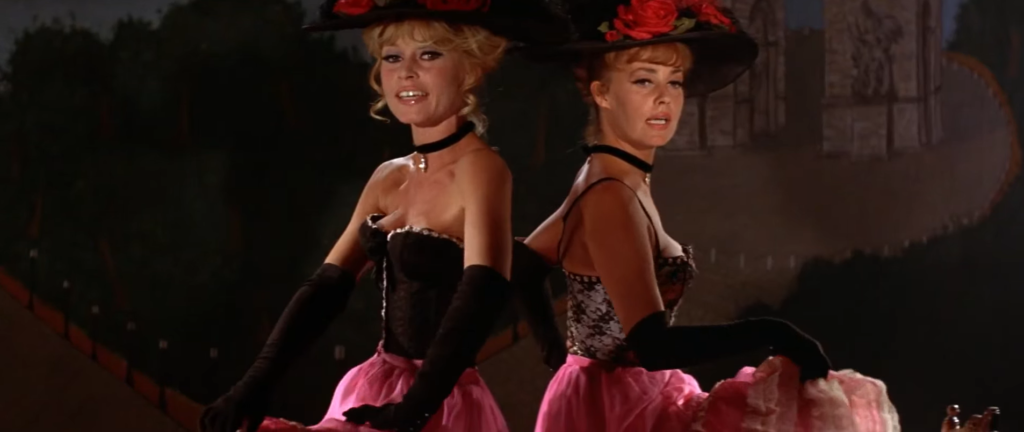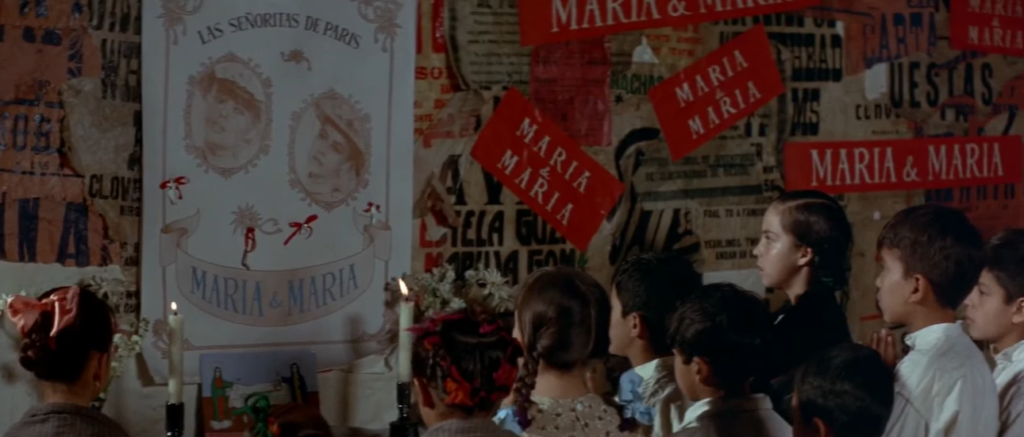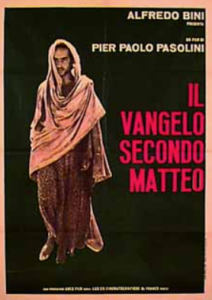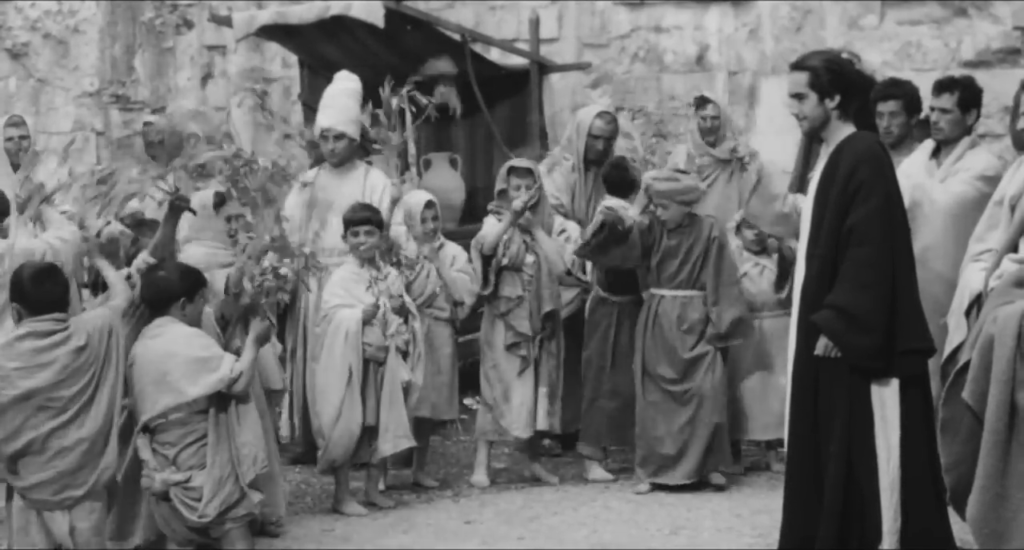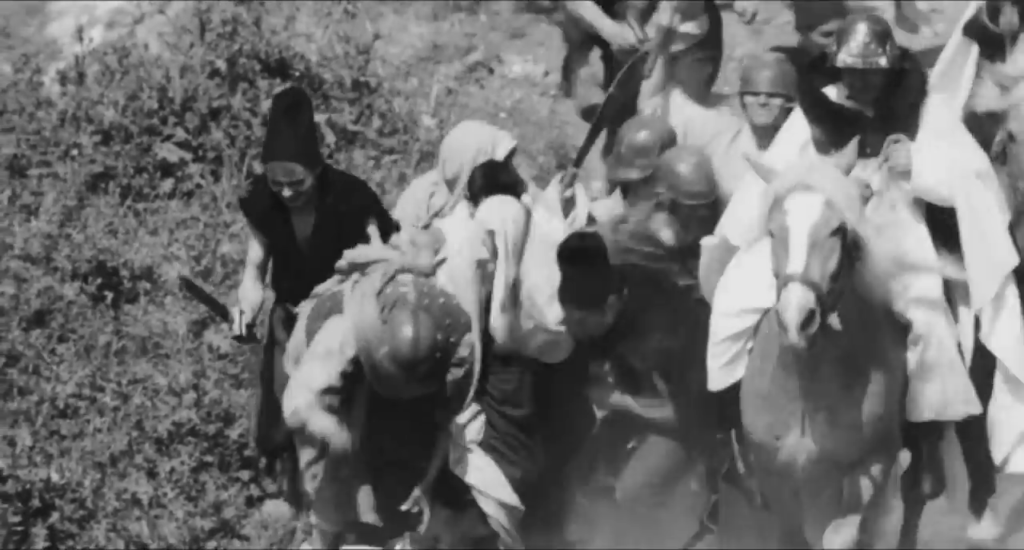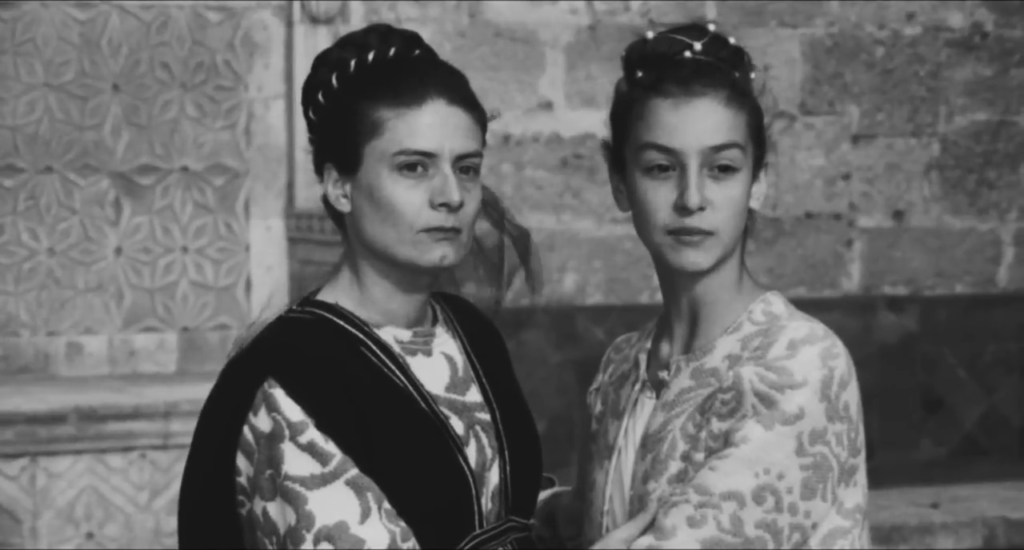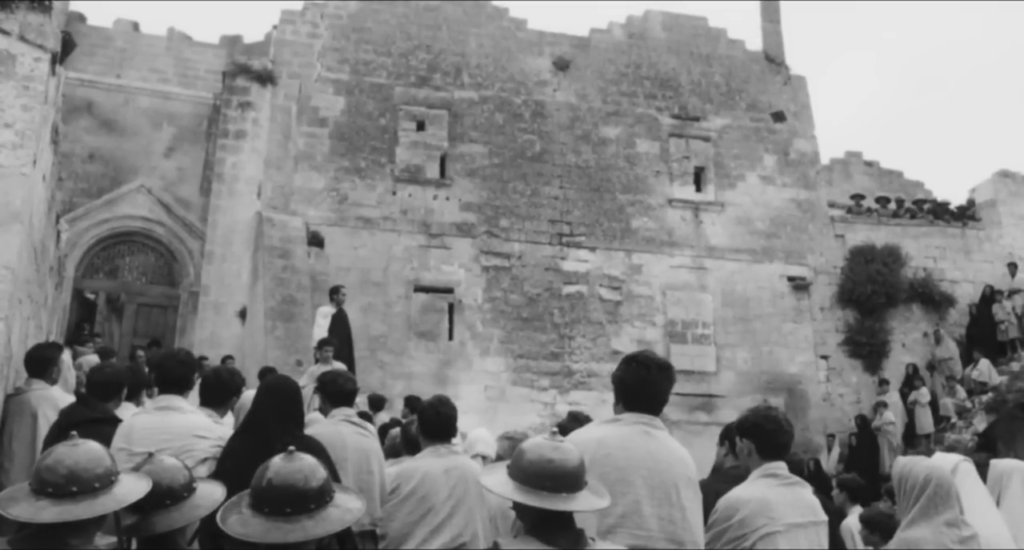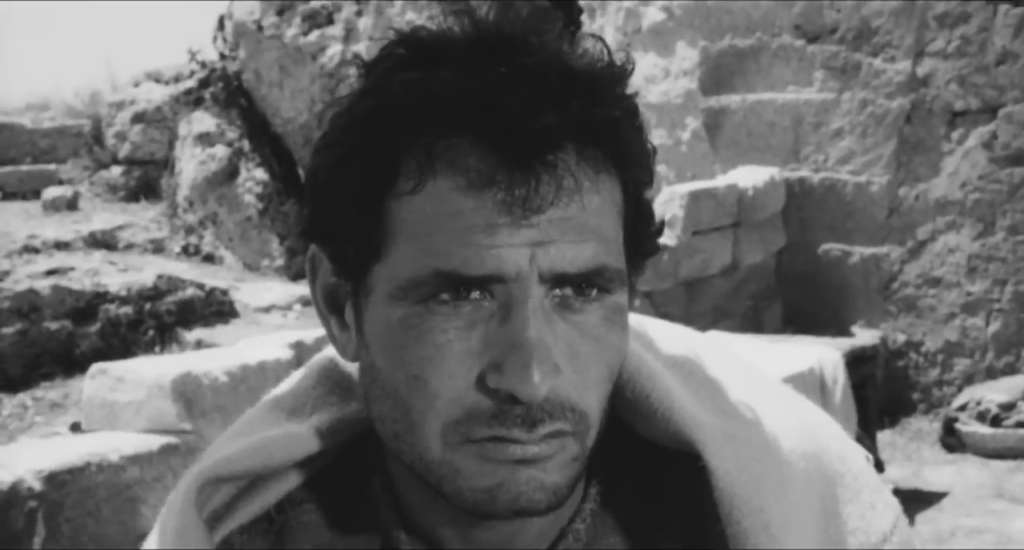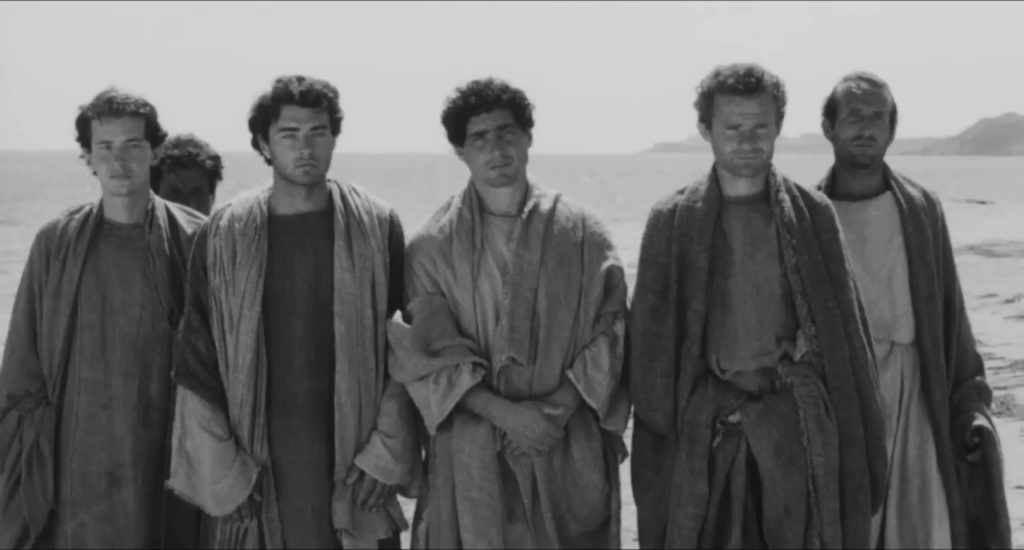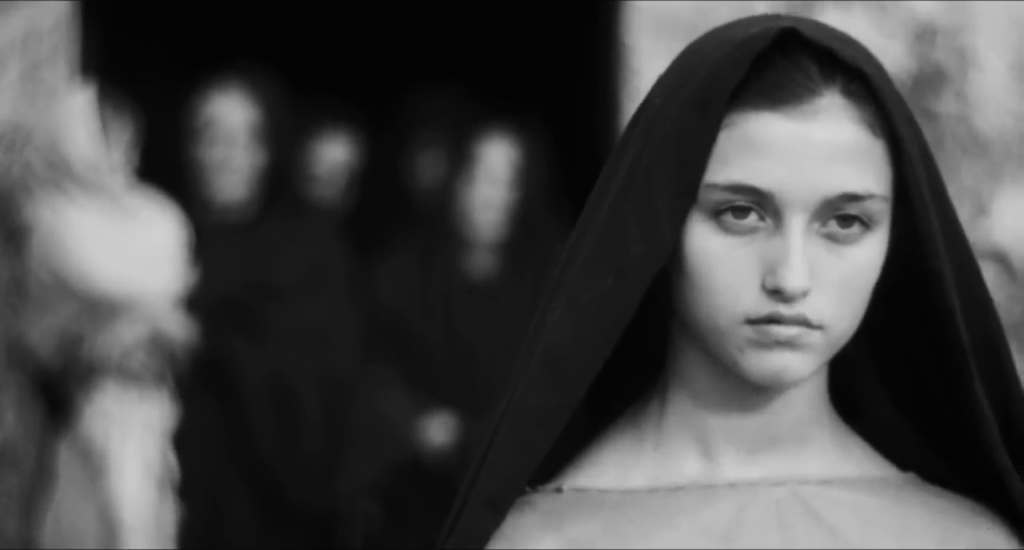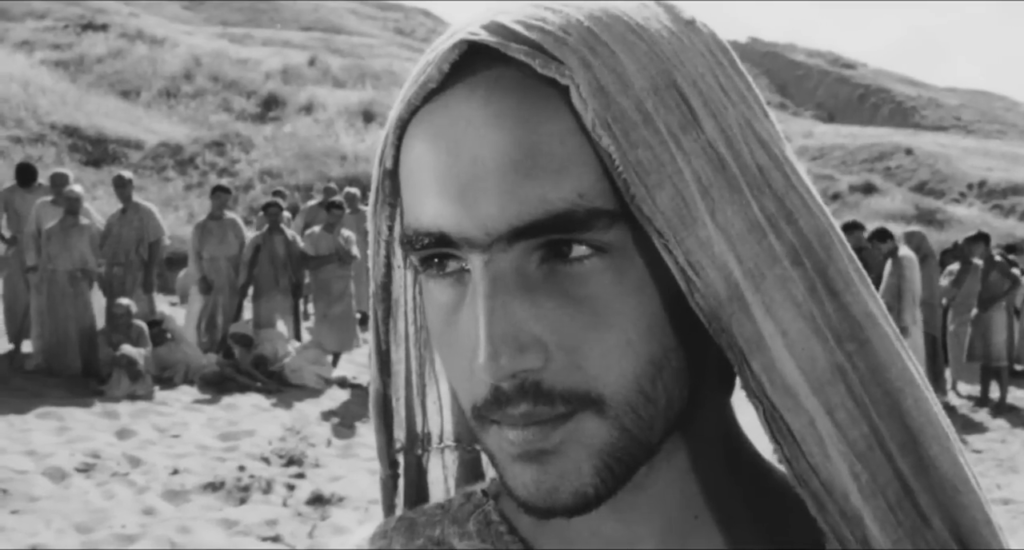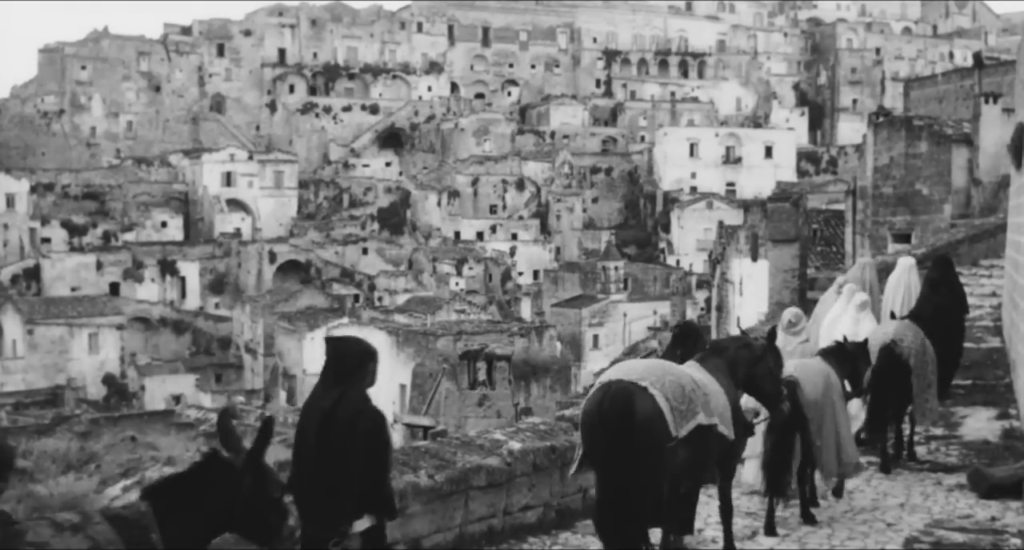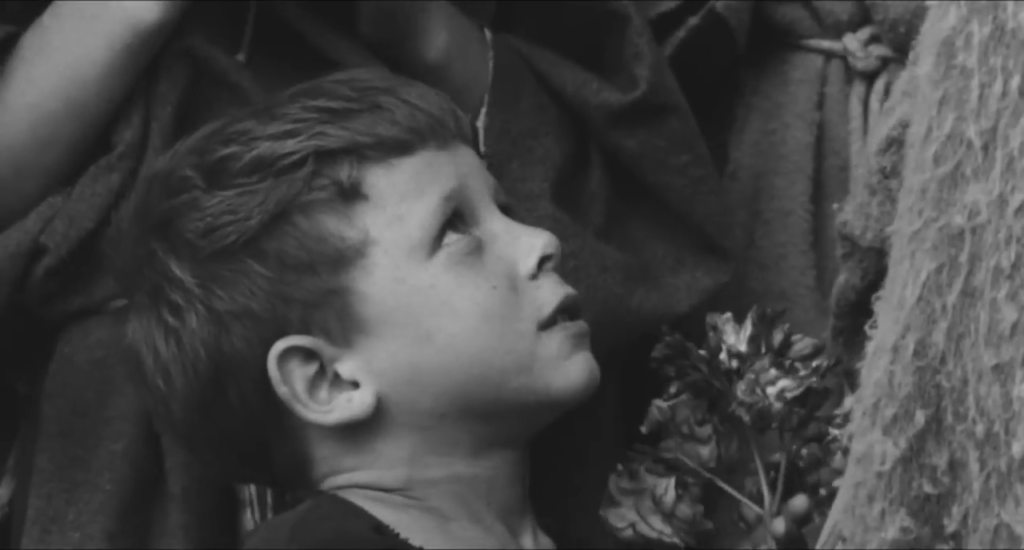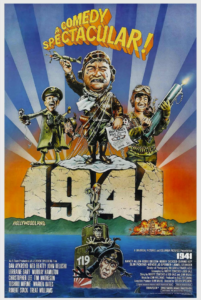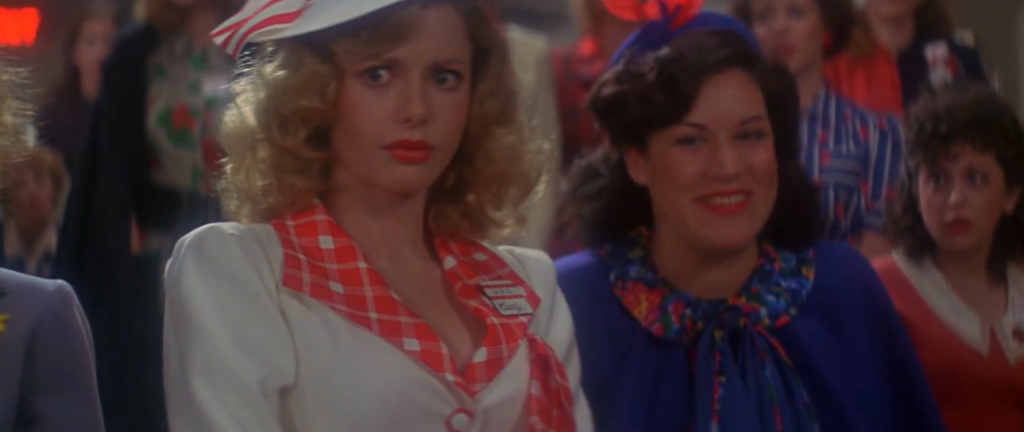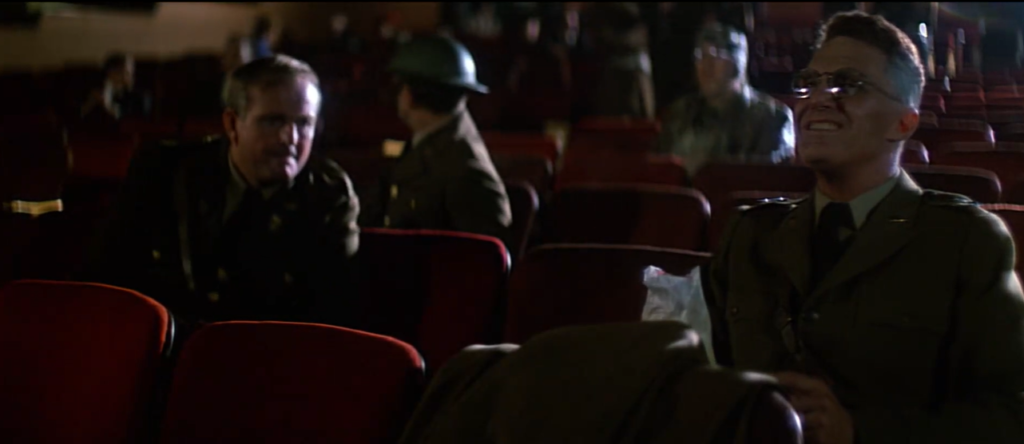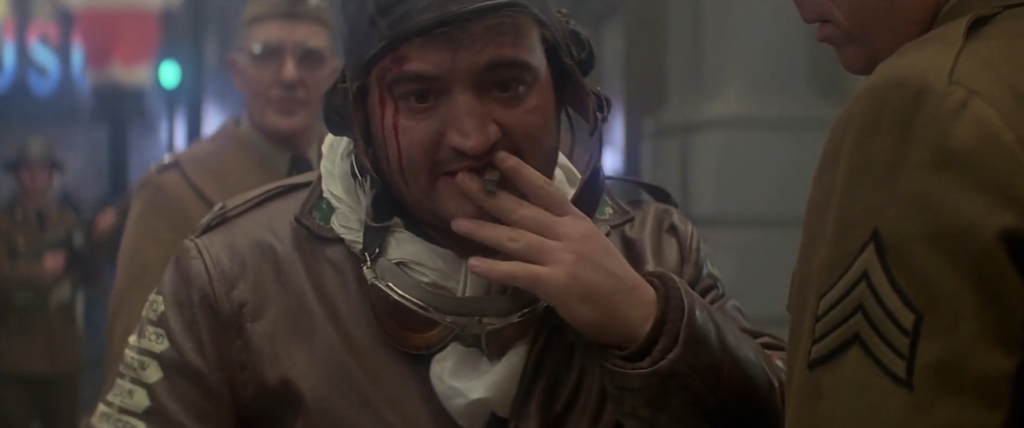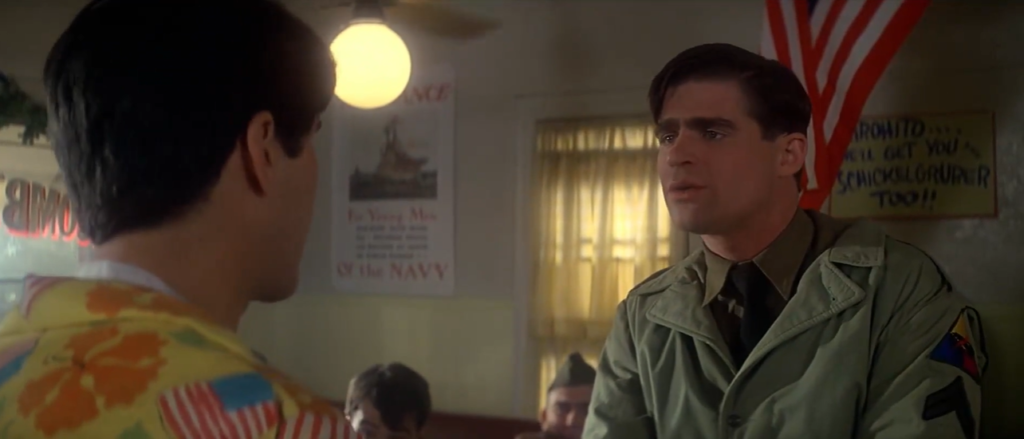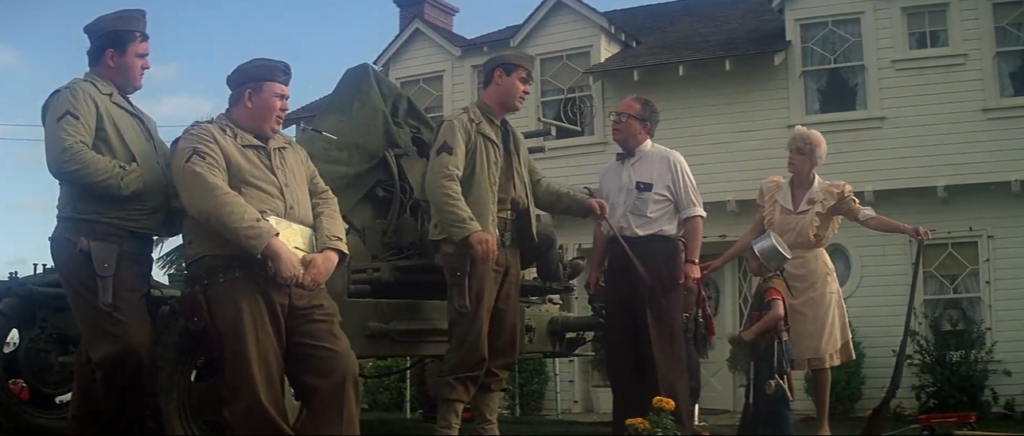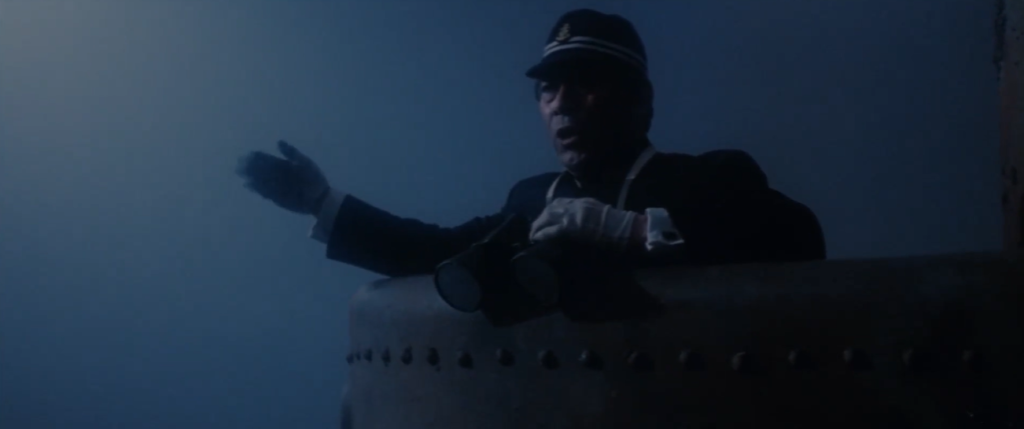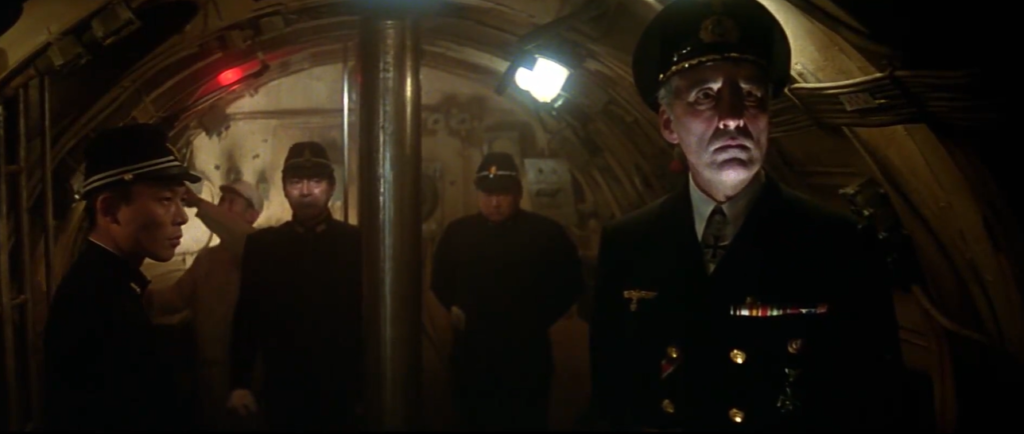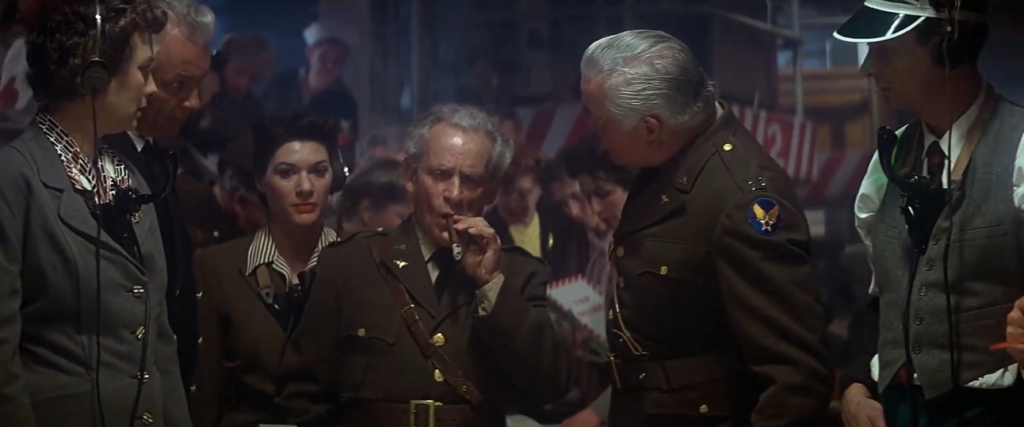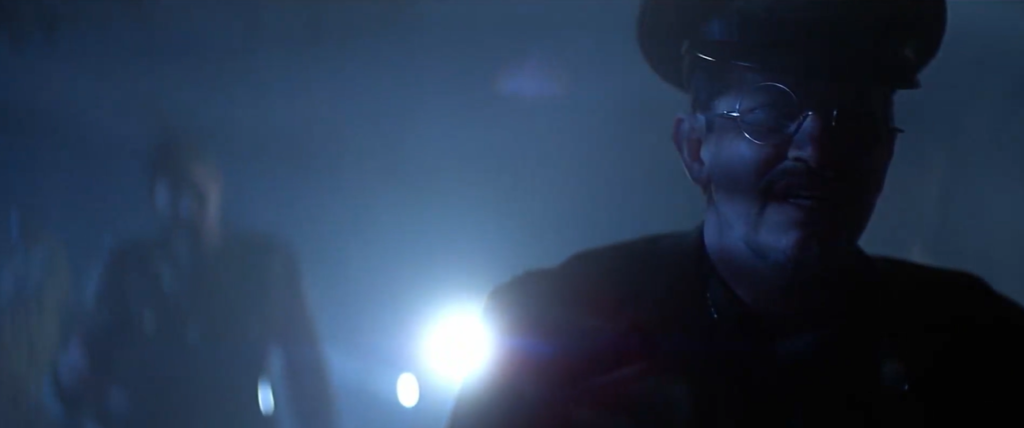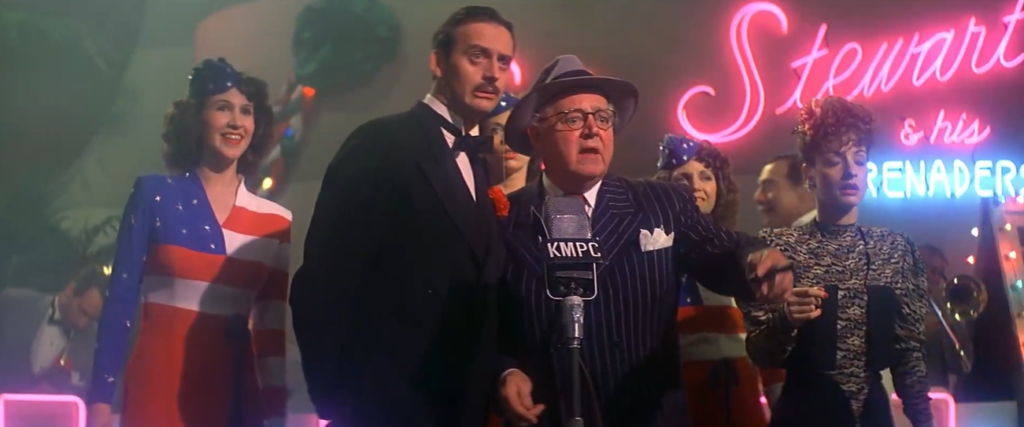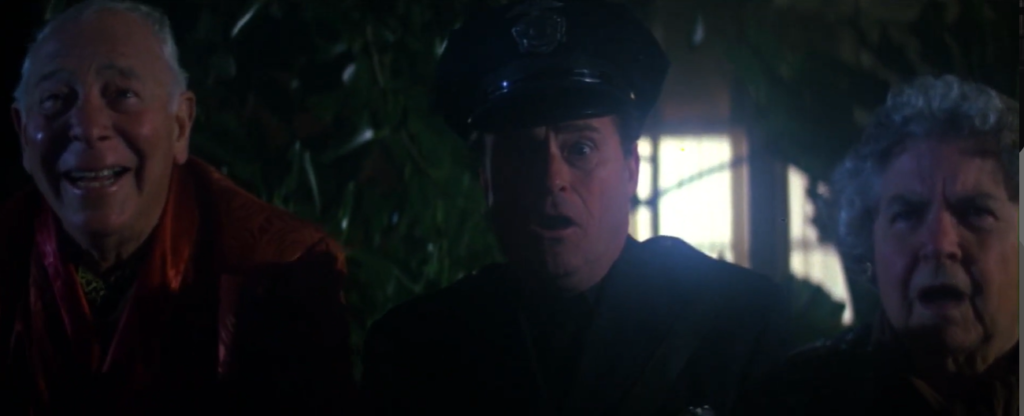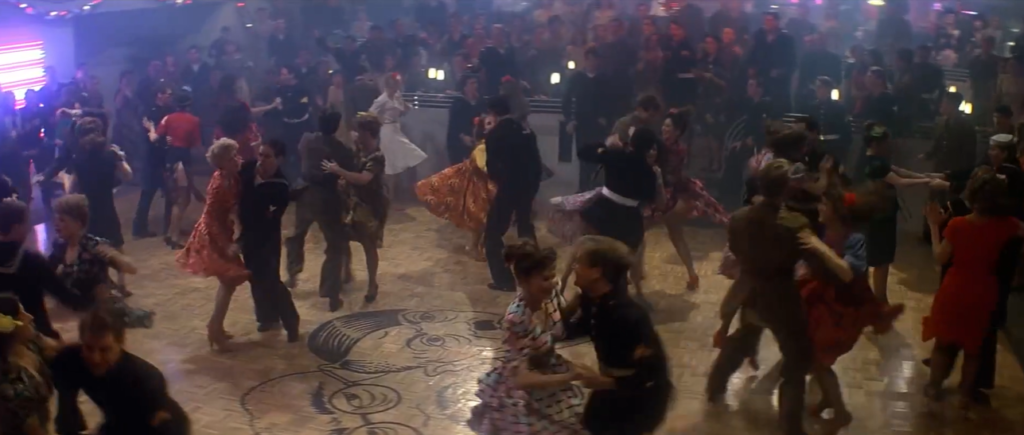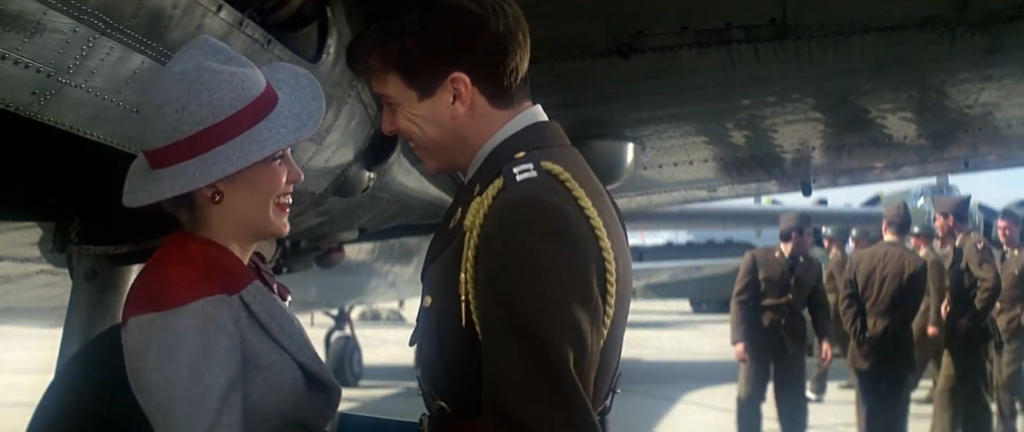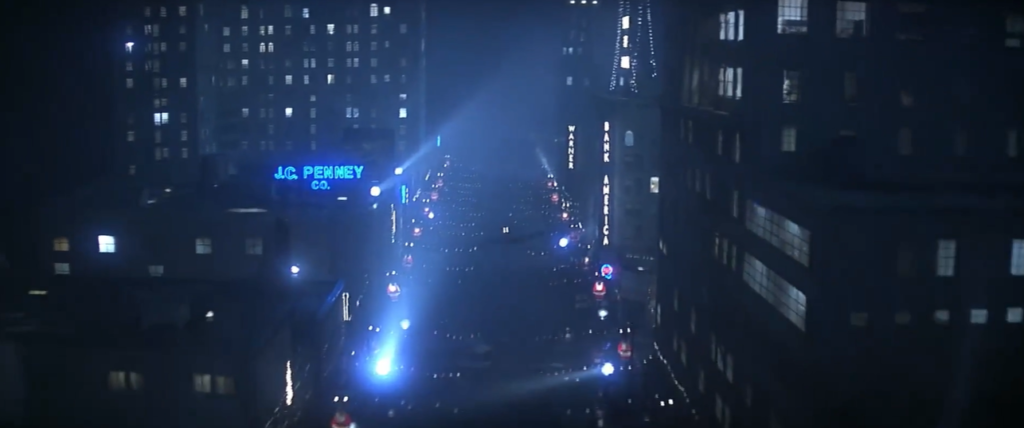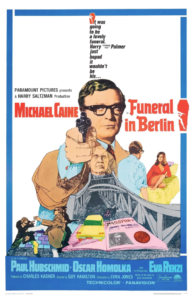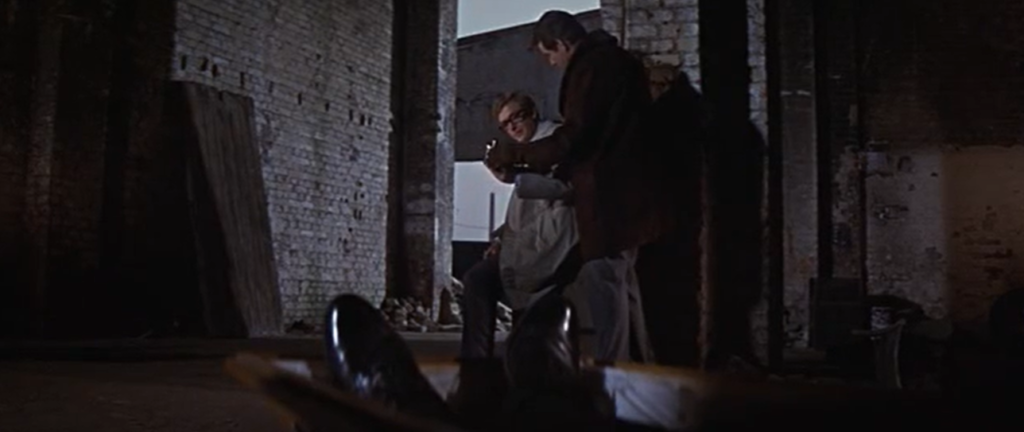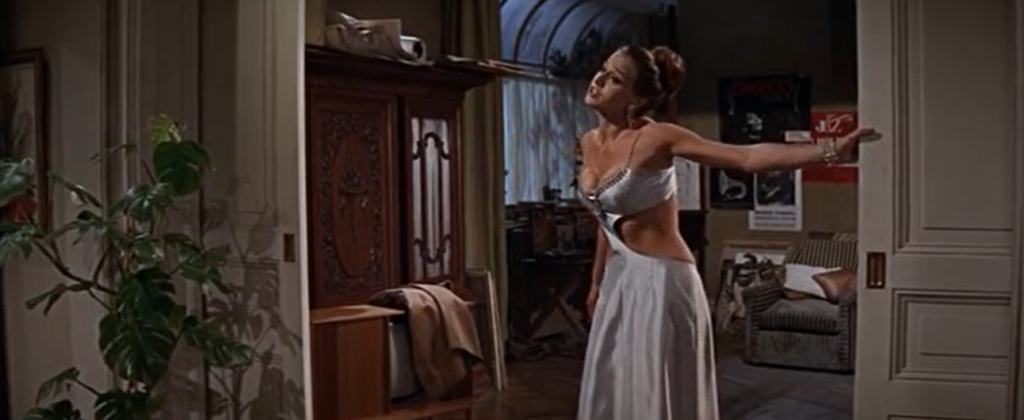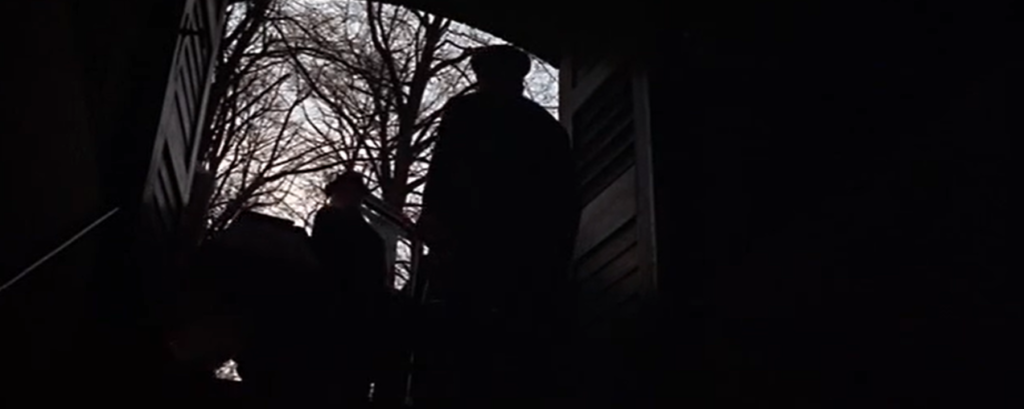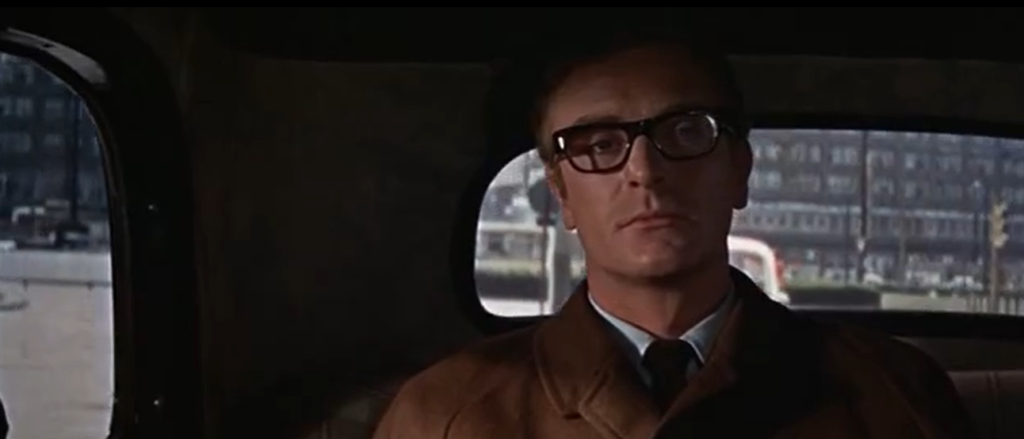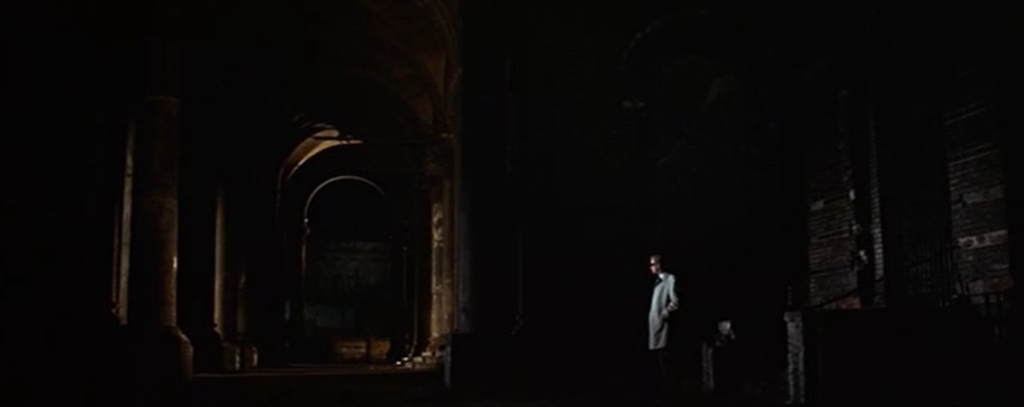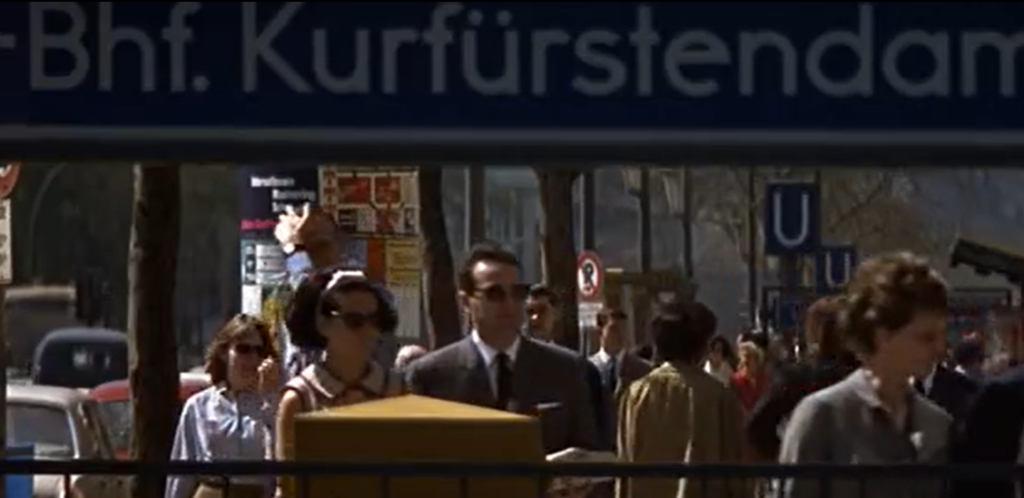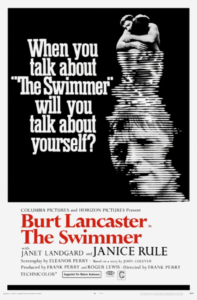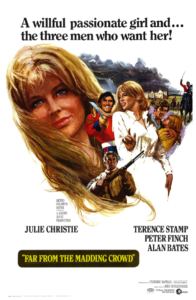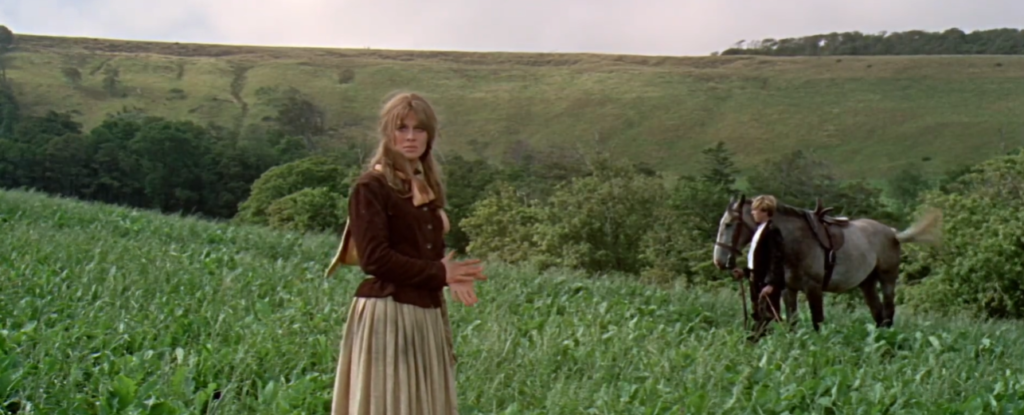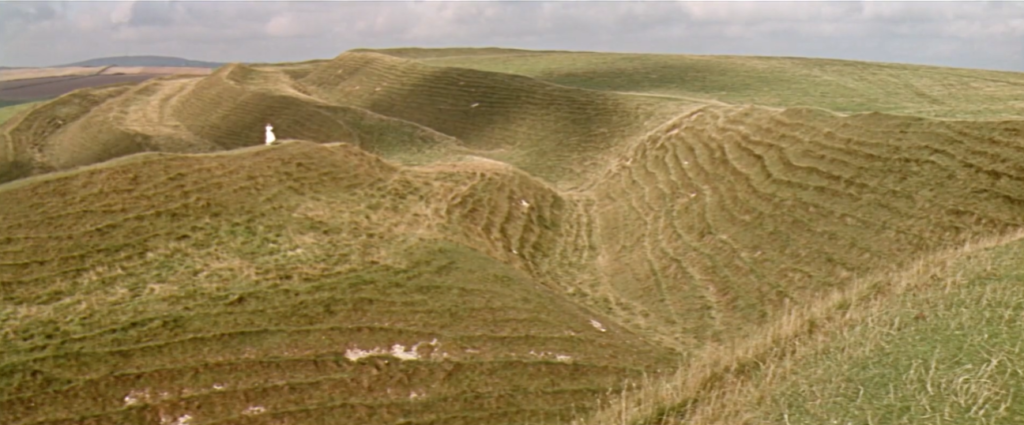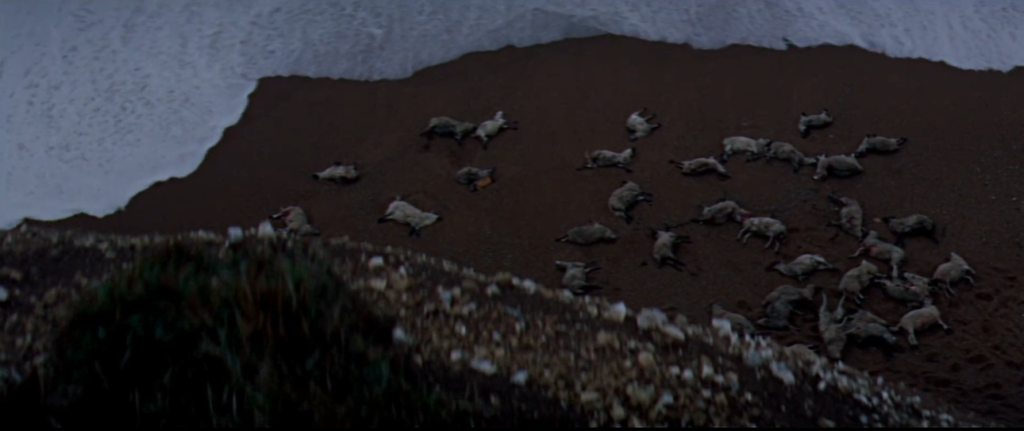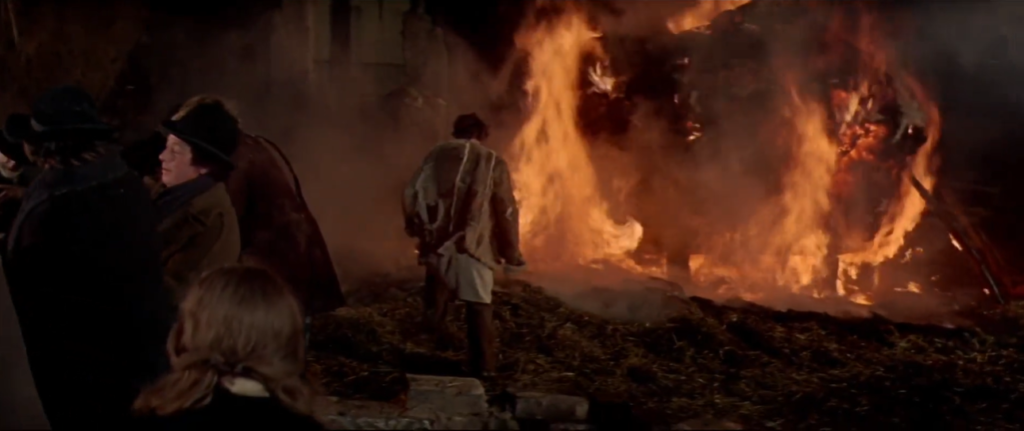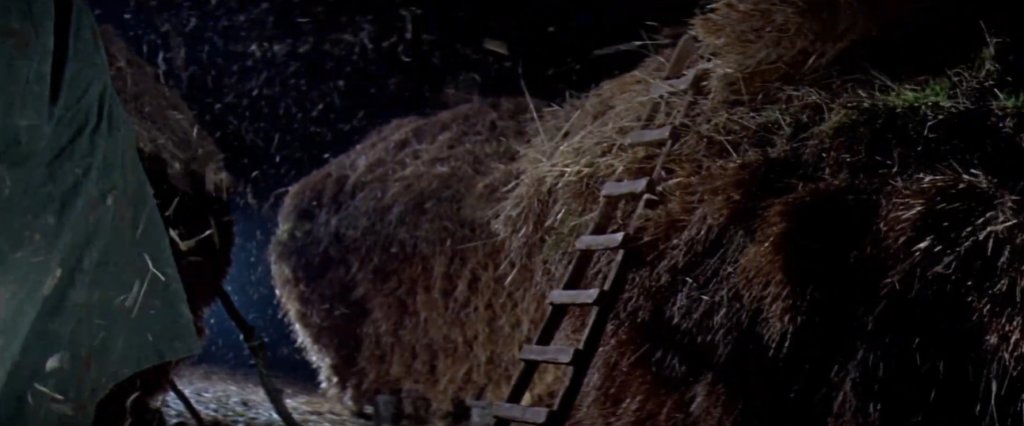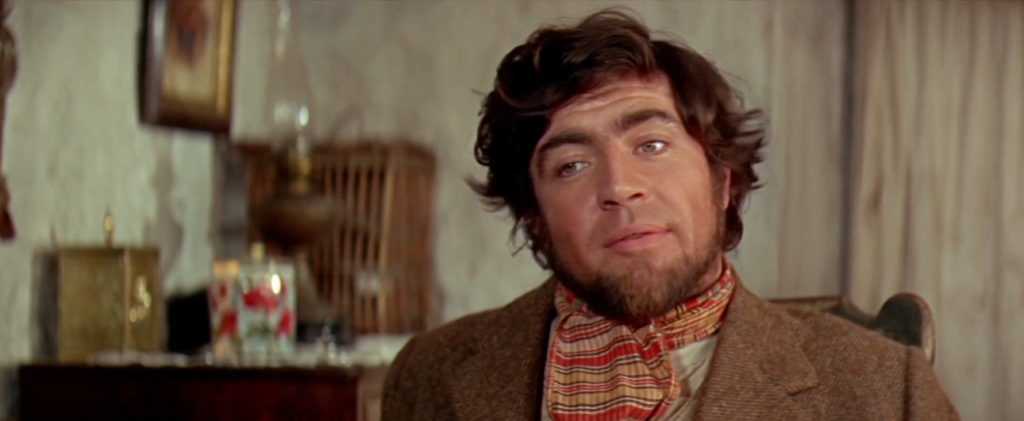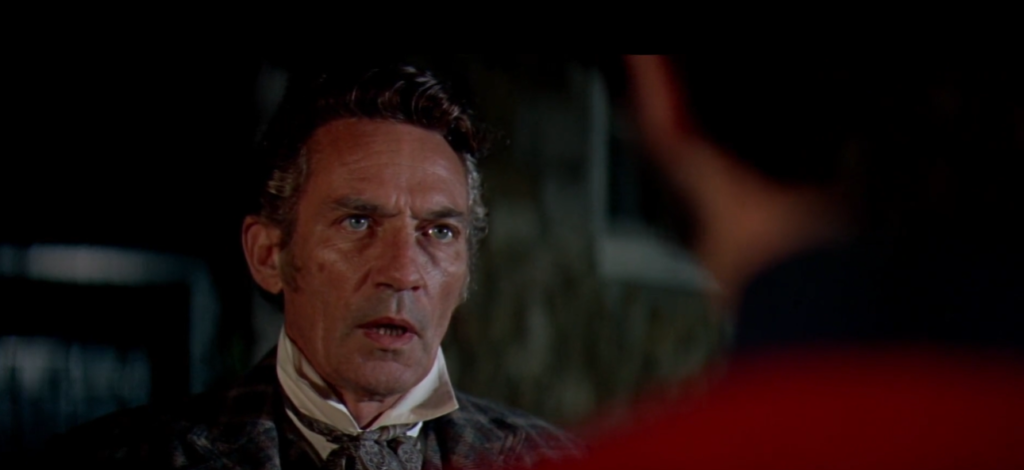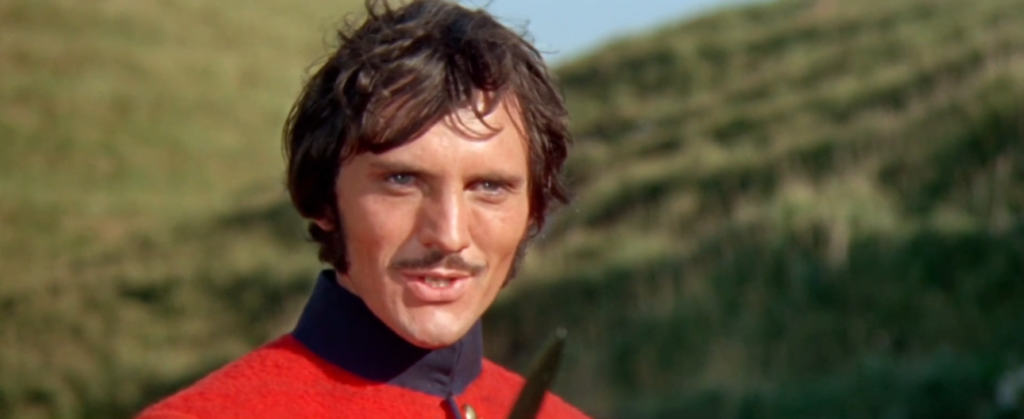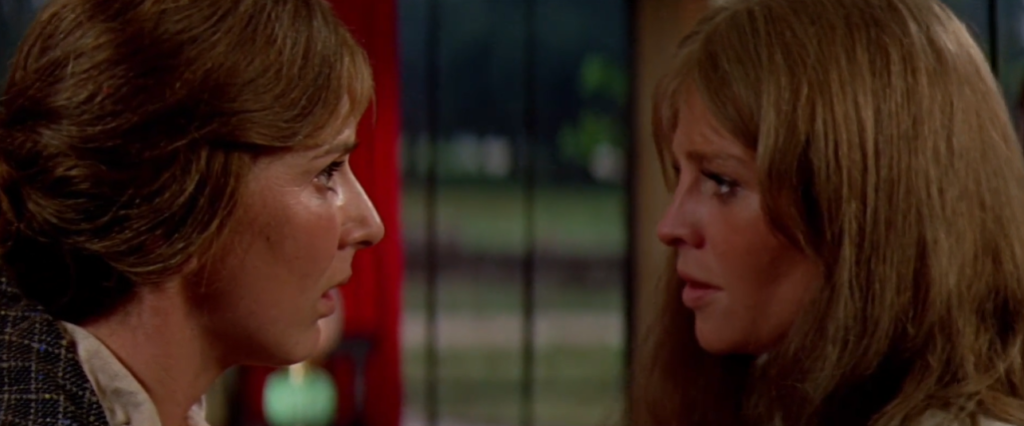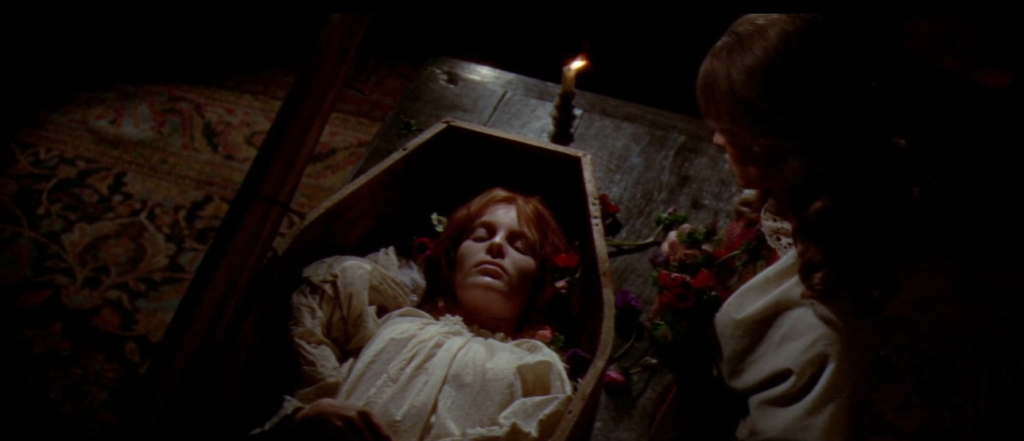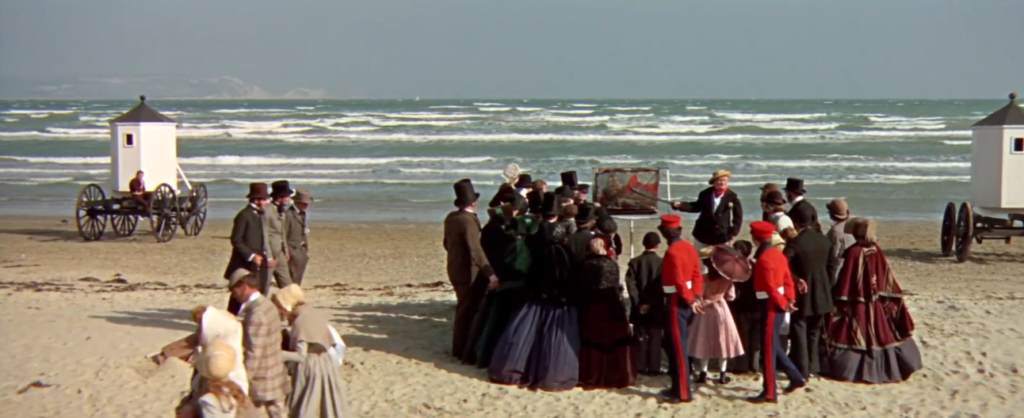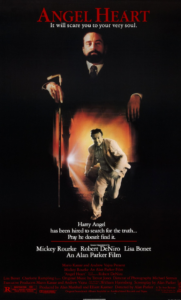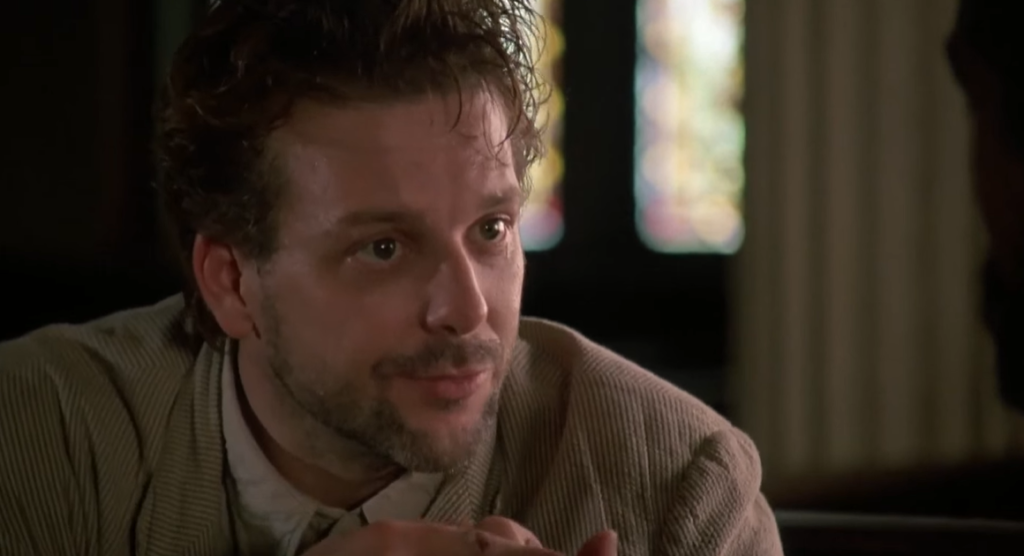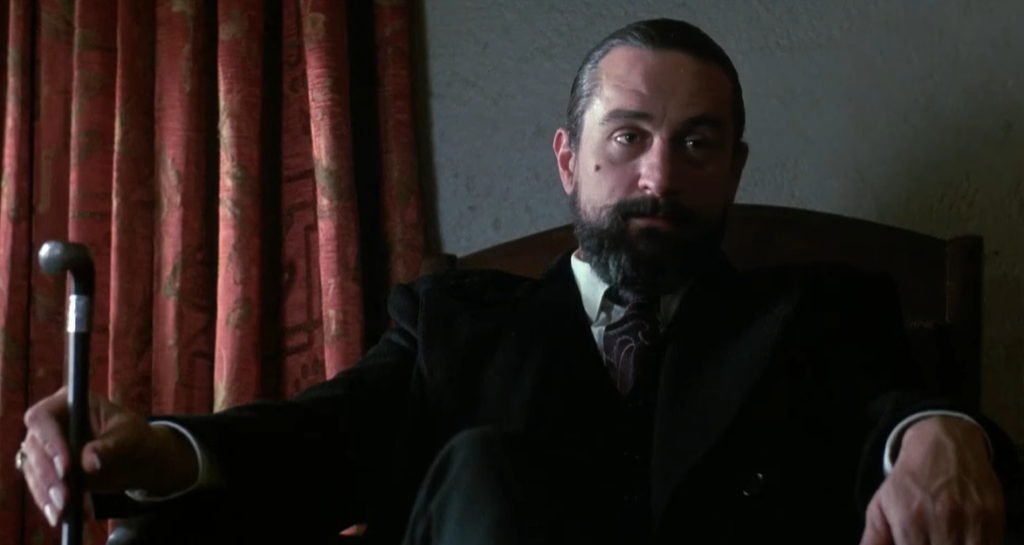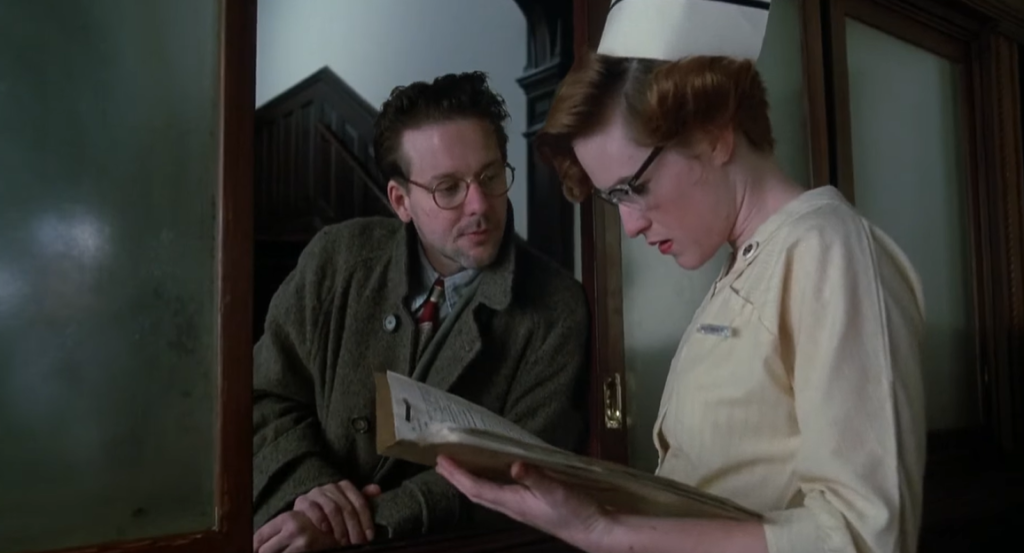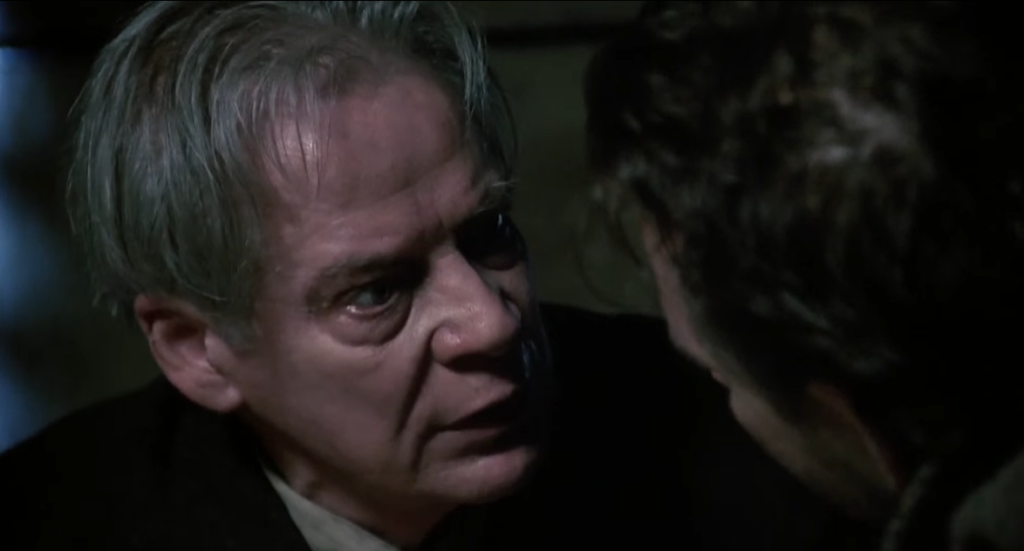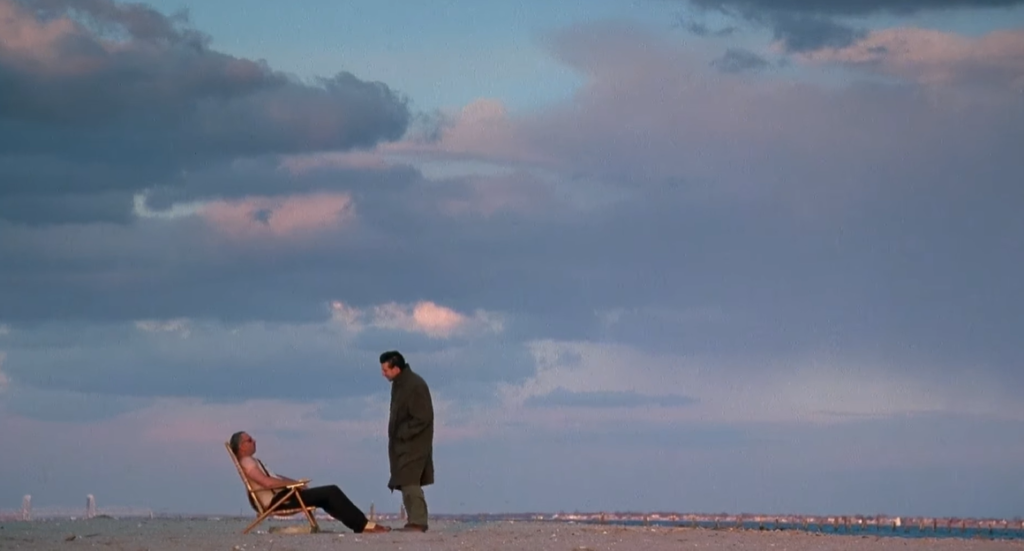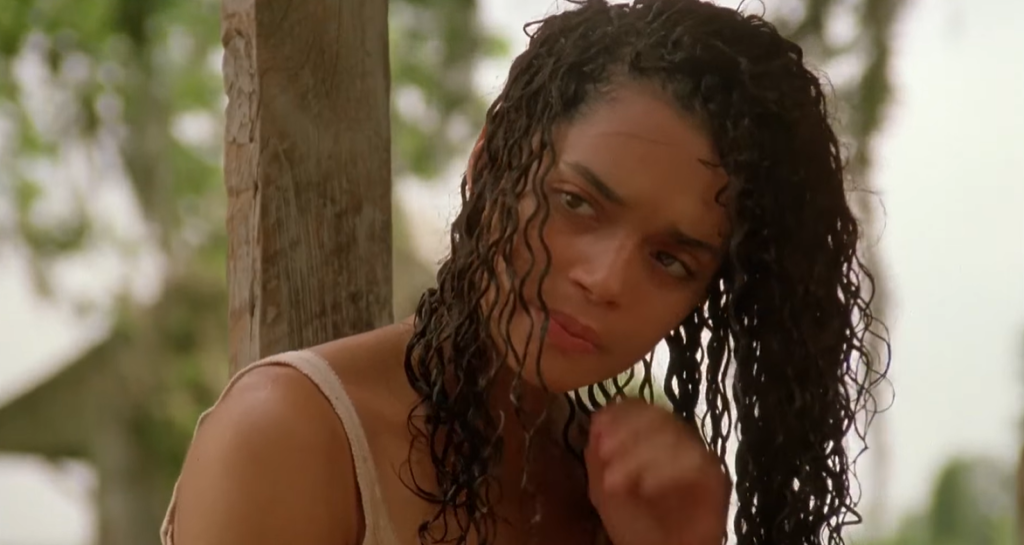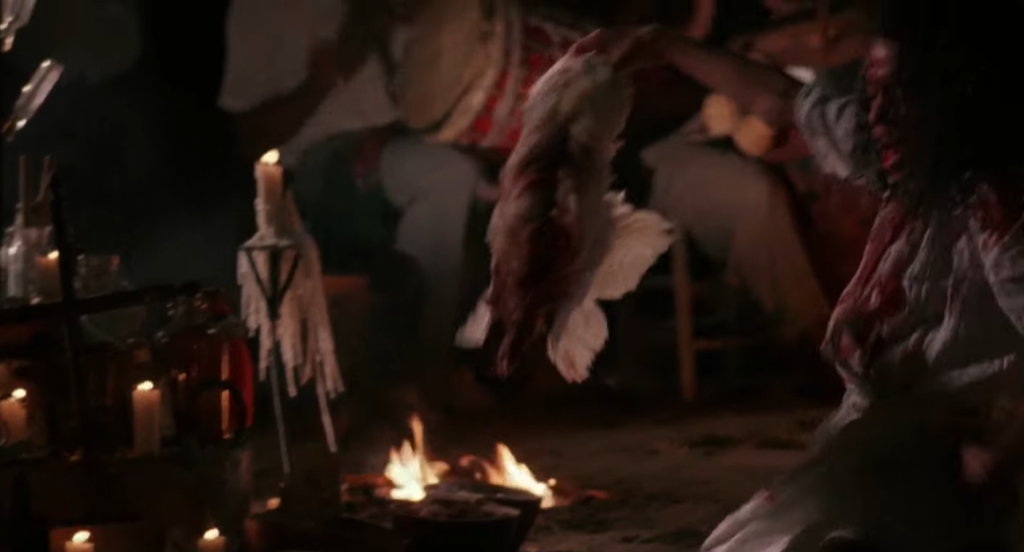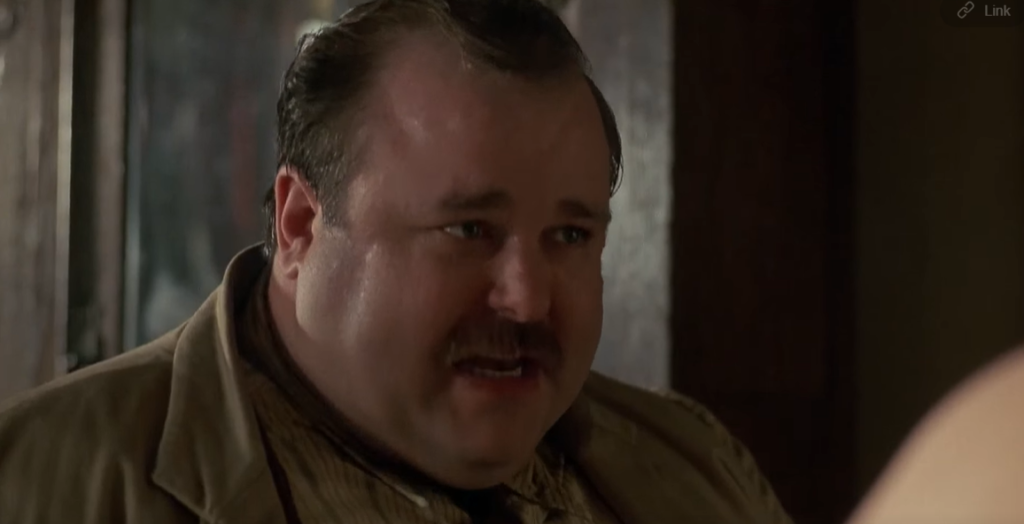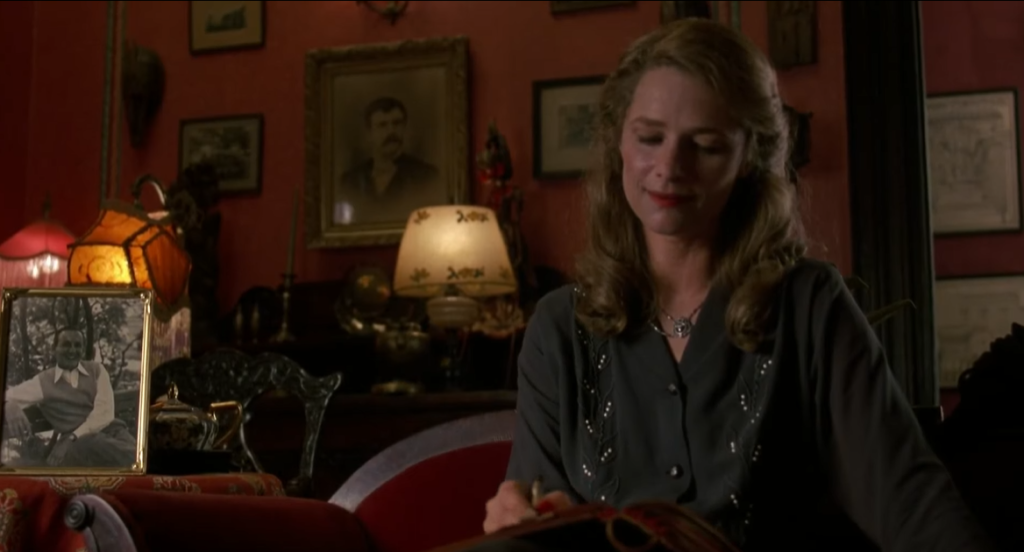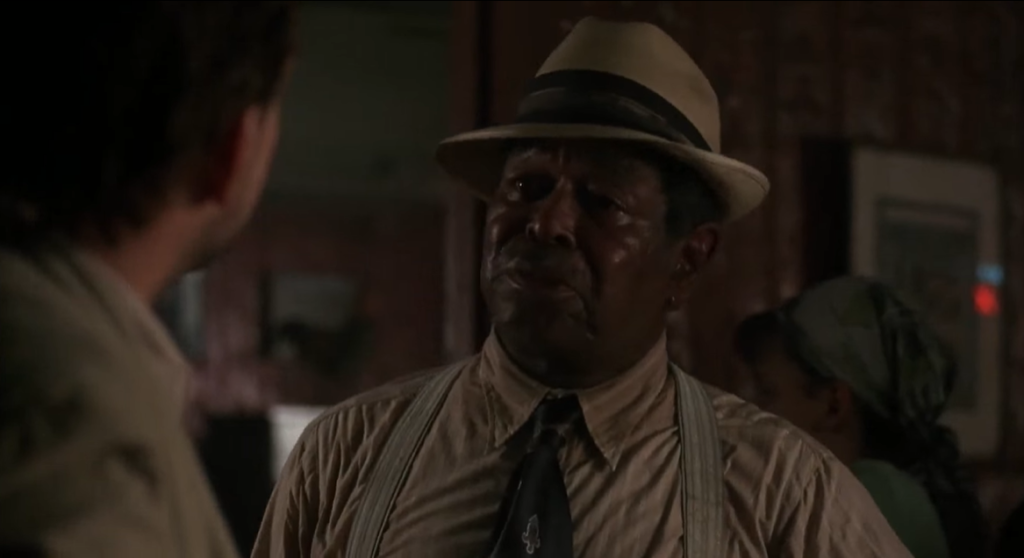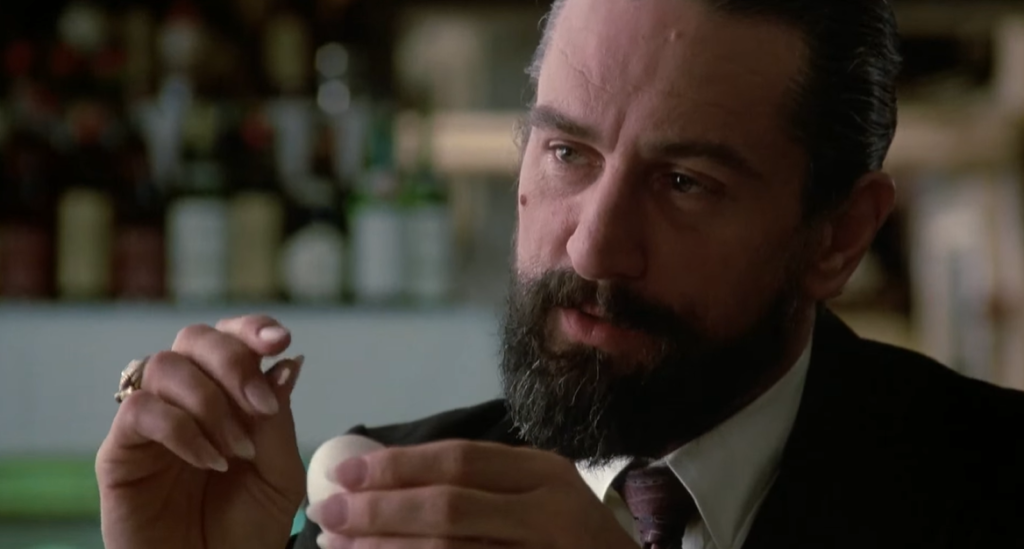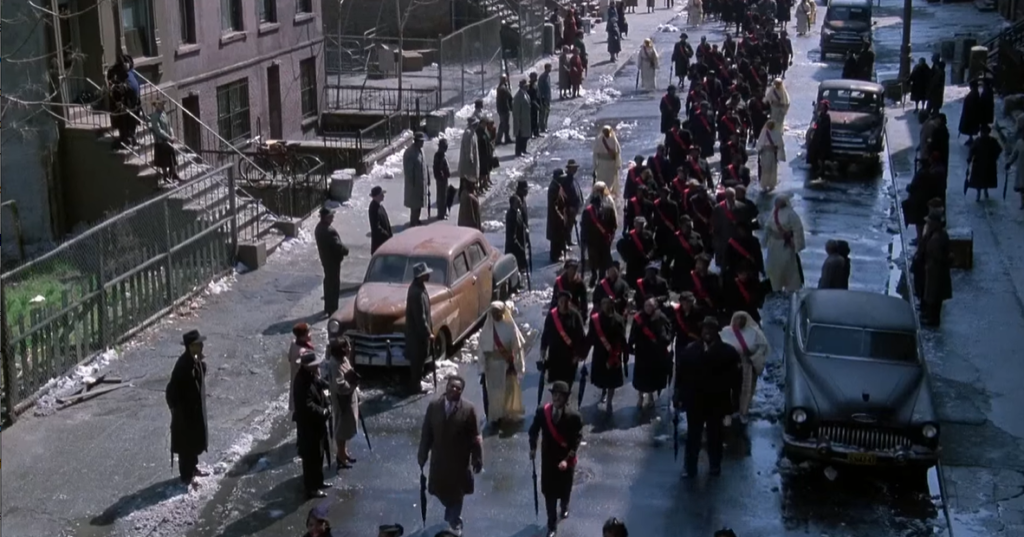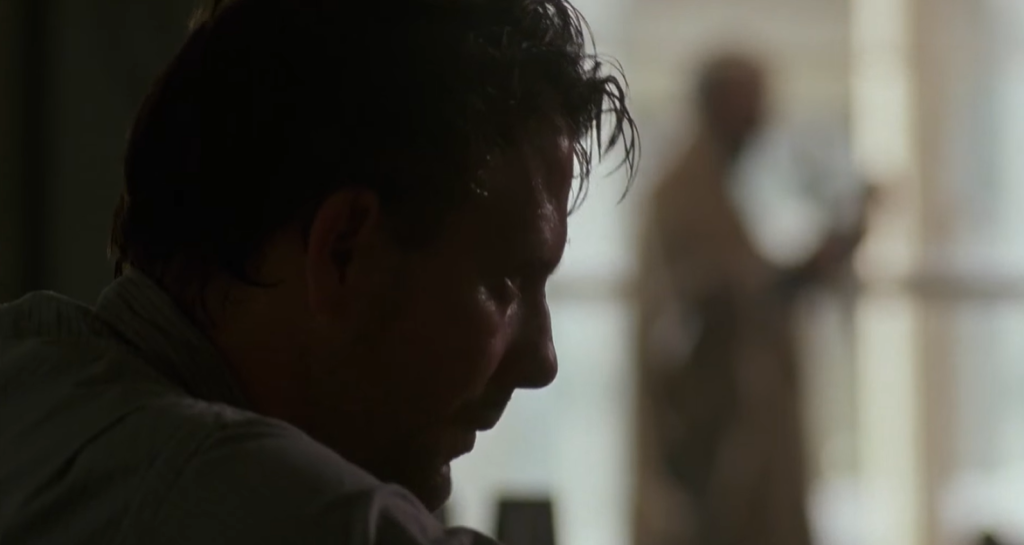|
Genres, Themes, Actors, and Directors:
- Burt Lancaster Films
- Downward Spiral
- Frank Perry Films
- Janice Rule Films
- Kim Hunter Films
- Mid-Life Crisis
- Road Trip
Review:
Husband-wife team Frank and Eleanor Perry collaborated on this adaptation of a (seemingly unfilmable) 13-page short story by John Cheever, telling a uniquely haunting road trip about a man hoping to literally swim his way back home again. What will he find once he gets there? We’re slowly given clues throughout Lancaster’s journey, as the people he encounters at various pools gradually humor him less and less; we know something is up with his past (and that he’s not quite in touch with reality), but specifics aren’t clear. At his first pool after emerging from the woods, Lancaster maps out his trek:
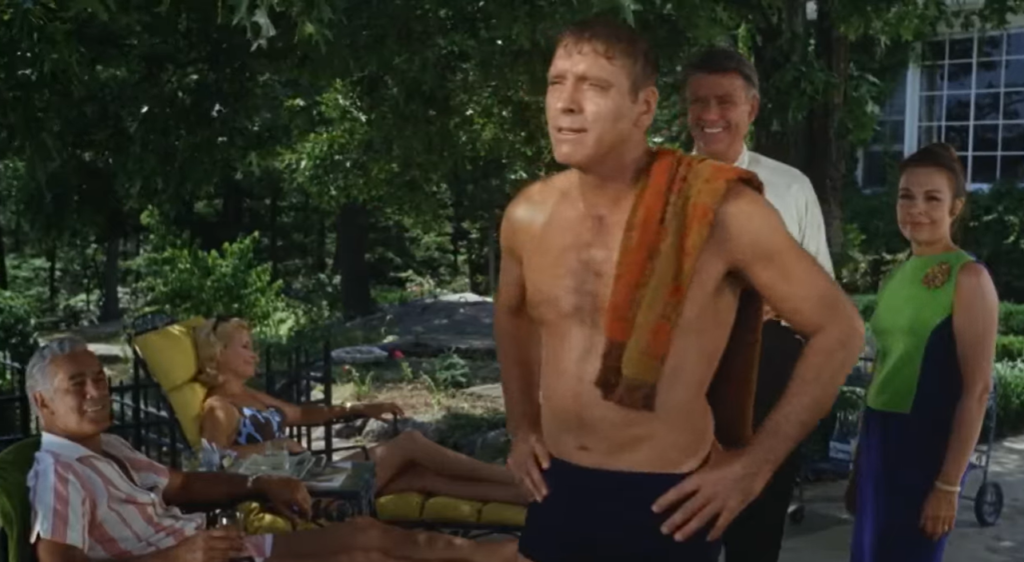
… heading next to a new pool just put in by Kim Hunter and her husband (Charles Drake).
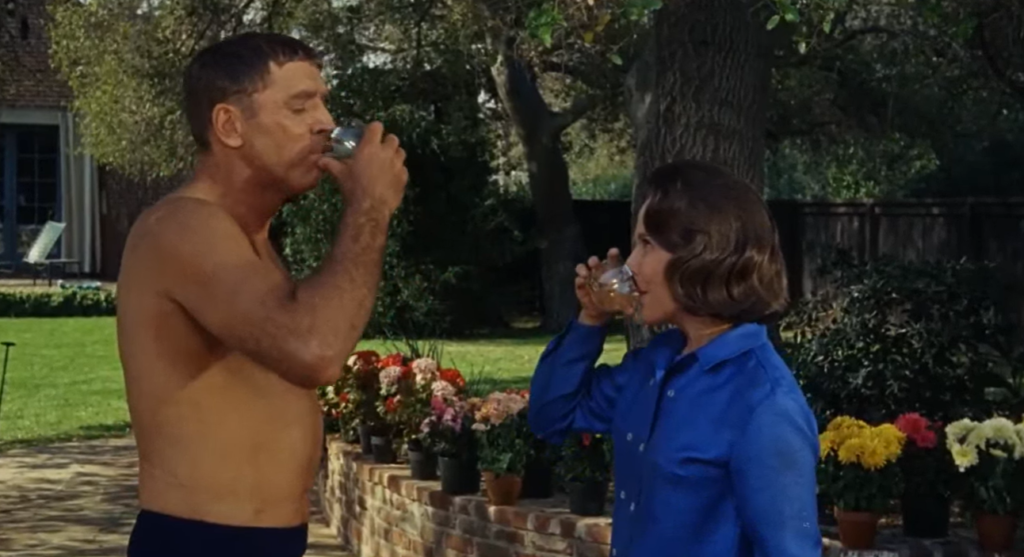
After this, he arrives at a pool where he’s chastised by a woman (Cornelia Otis Skinner) upset at him for not visiting her sick son in the hospital — and we see here that all is not as fine and chummy with Lancaster across his social set as he’d like us to believe.
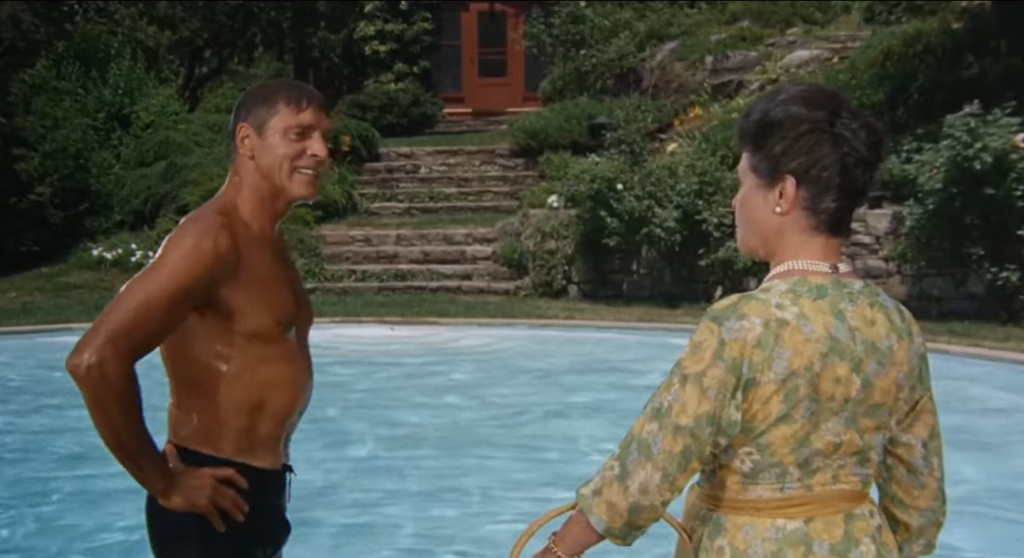
However, Lancaster is given an extended idyllic reprieve at his next stop, where he encounters his kids’ now-grown babysitter (Janice Landgard), who agrees to go on part of his swimming adventure with him.
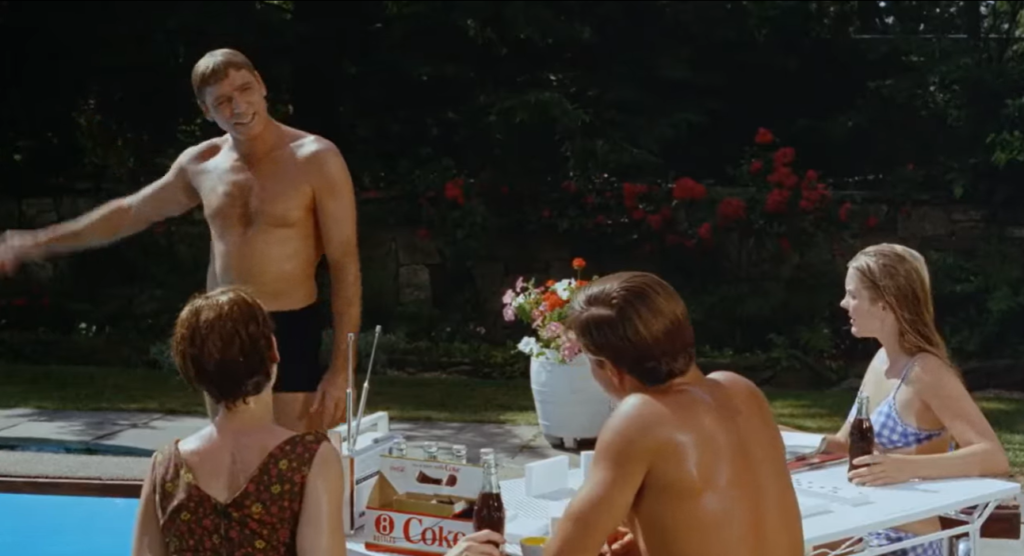
They stop at a rollicking, drink-filled pool party:
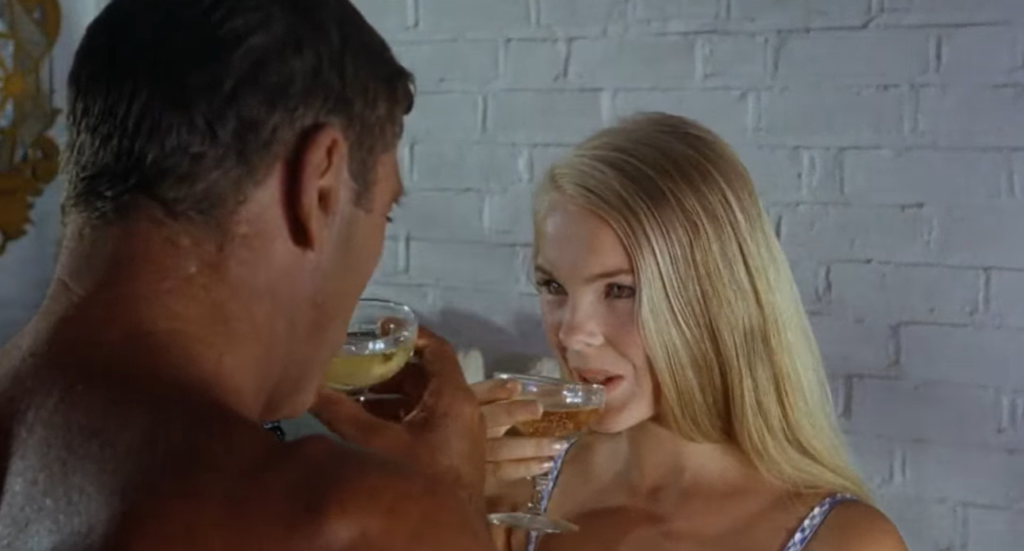
… but after slo-mo reminiscing and frolicking:
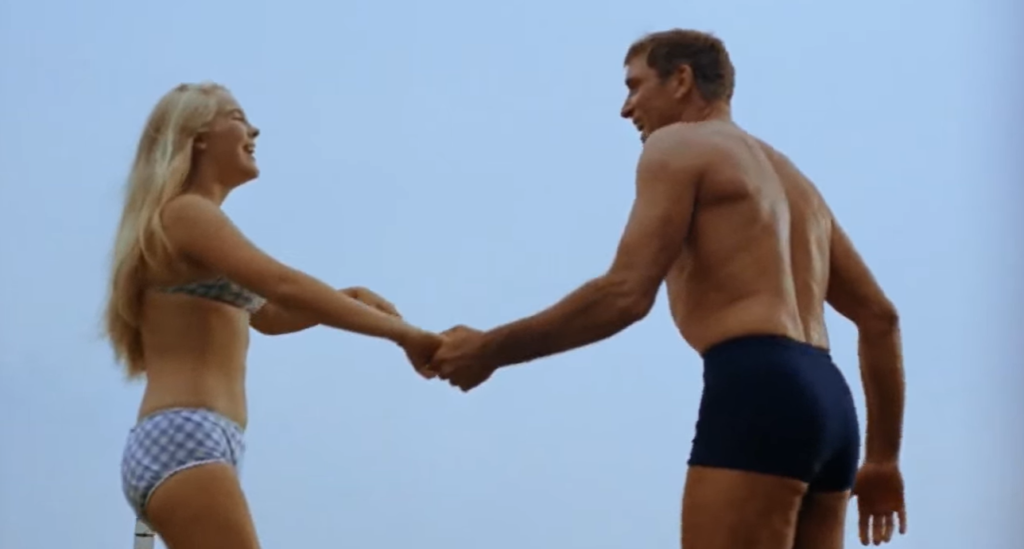
… his bubble of reality is burst once again.
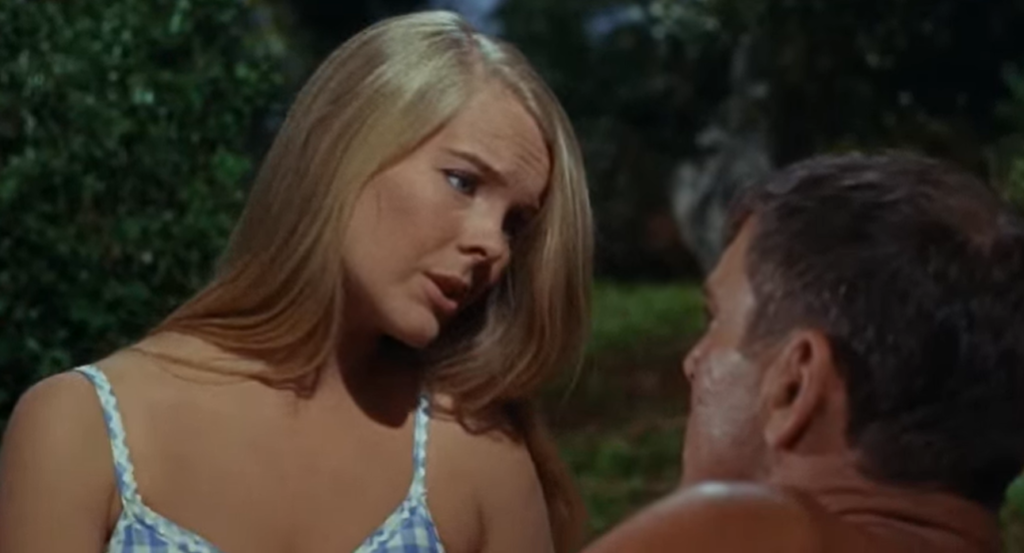
He sprints off to a pool owned by a pair of prissy nudists (Richard McMurray and Marge Champion):
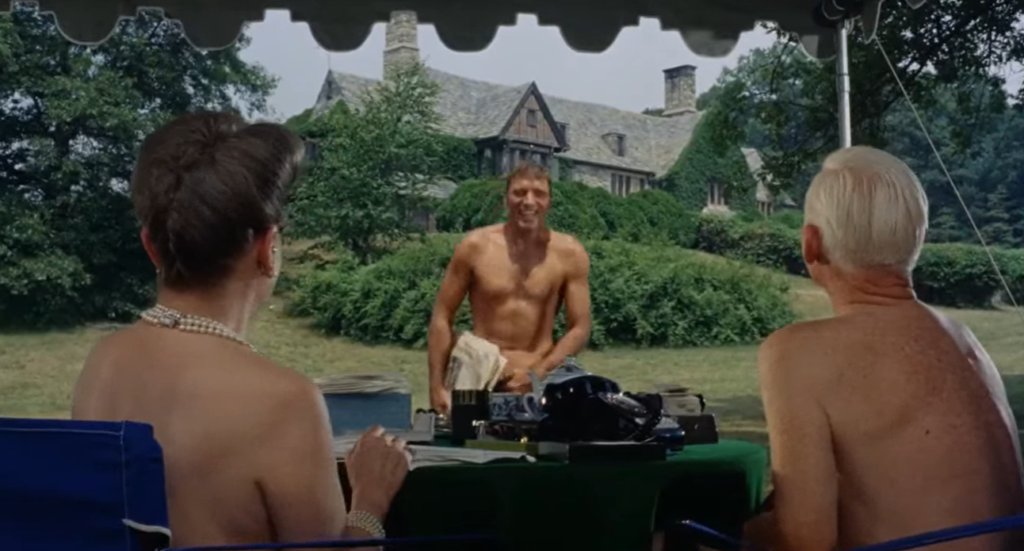
[SPOILER ALERT FROM ABOUT HERE ON OUT]
… who make it crystal clear that Lancaster is no longer the wealthy man he seems to think he still is. From there, he visits with a poor little rich boy (Michael Kearney) left home alone with a maid and an empty pool:

… and after leaving this boy with visions of fantasy (“You see, if you make believe hard enough that something is true, then it is true, for you!”), his own decline becomes even more pronounced. He next visits an over-the-top pool party with plenty of former friends ready to put him down:
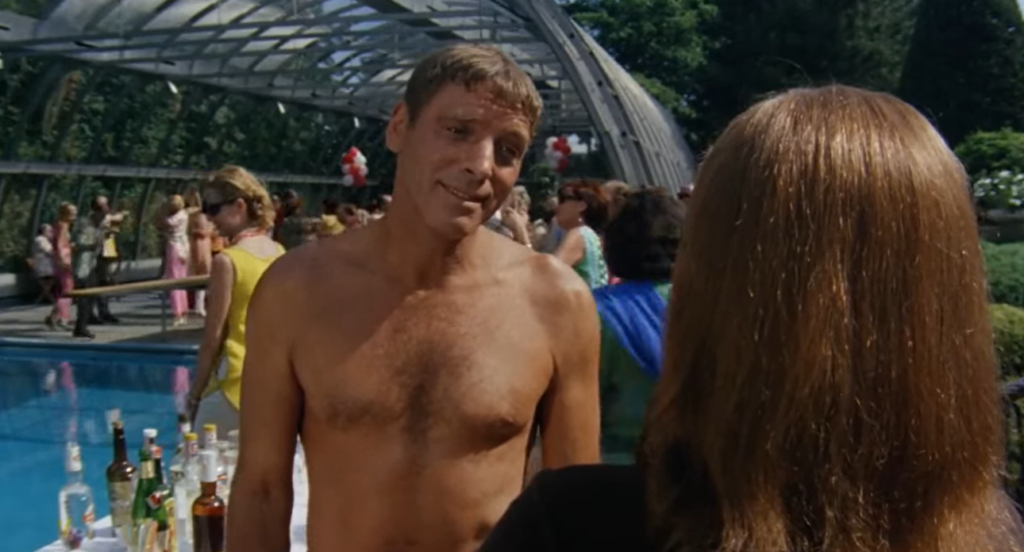
… and becomes especially agitated when he spots a hot dog cart that he formerly used with his own kids.
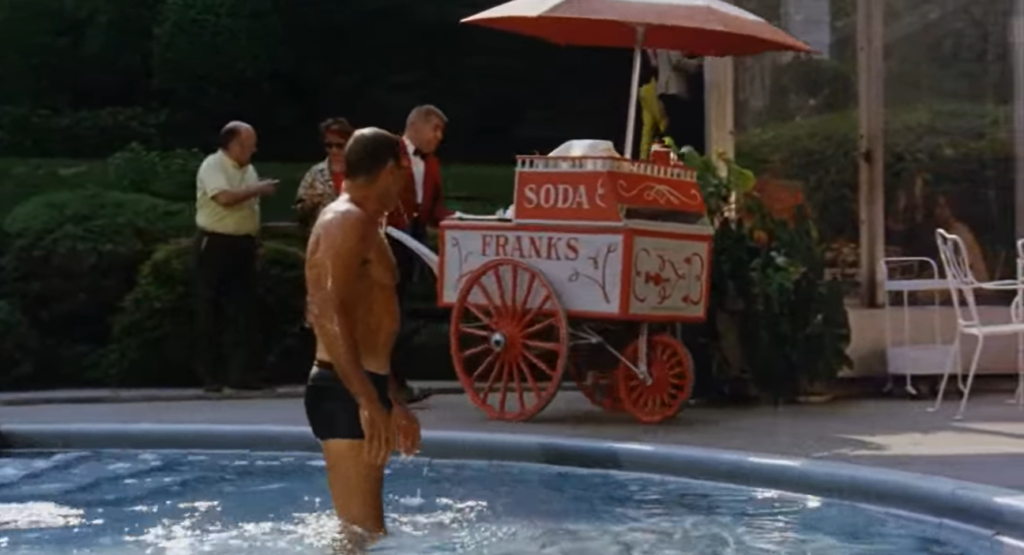
He can’t understand how or why it left his family’s possession, and things nearly turn violent. His next stop is with a former lover (Janice Rule) who is beyond exasperated with him; while she eventually shows some sympathy, she ultimately wants nothing more to do with him.
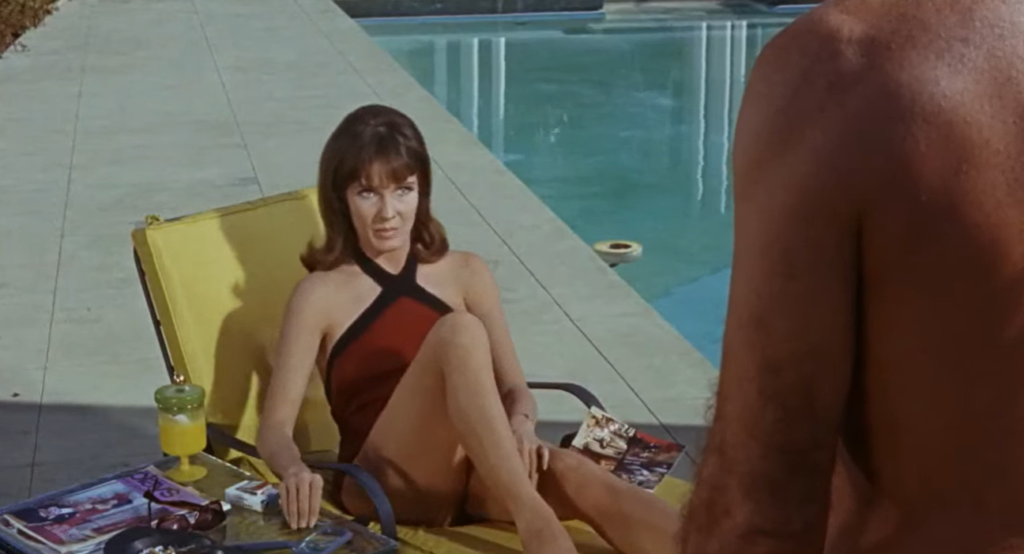
Lancaster’s final stop is a crowded municipal pool that he is barely allowed into, given he doesn’t have 50 cents to pay and his feet are dirty from crossing a highway; however, he eventually crawls his way across:
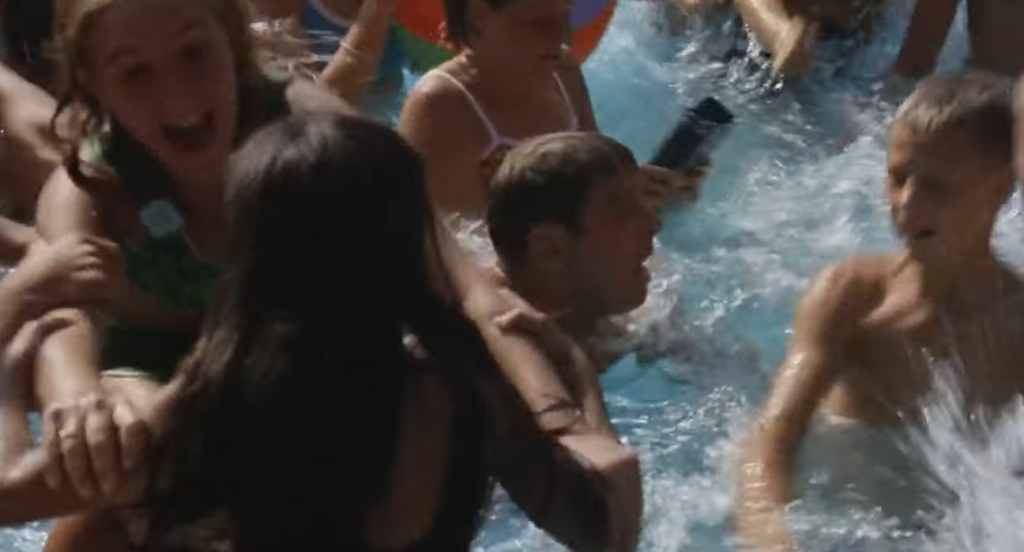
… and arrives at his ultimate destination, only to find the shock of his life waiting back at his home. By this point we realize the film has been unfolding like a Twilight Zone episode — and we really don’t know how things will end. It’s an unnerving but intriguing journey to follow along on, well worth a one-time look (though a repeated viewing will unveil new layers about what’s come before).
Note: Watch for Joan Rivers in a memorable bit part (her screen debut), as someone nervously flirting with Lancaster before she’s clued in about how troubled he is.
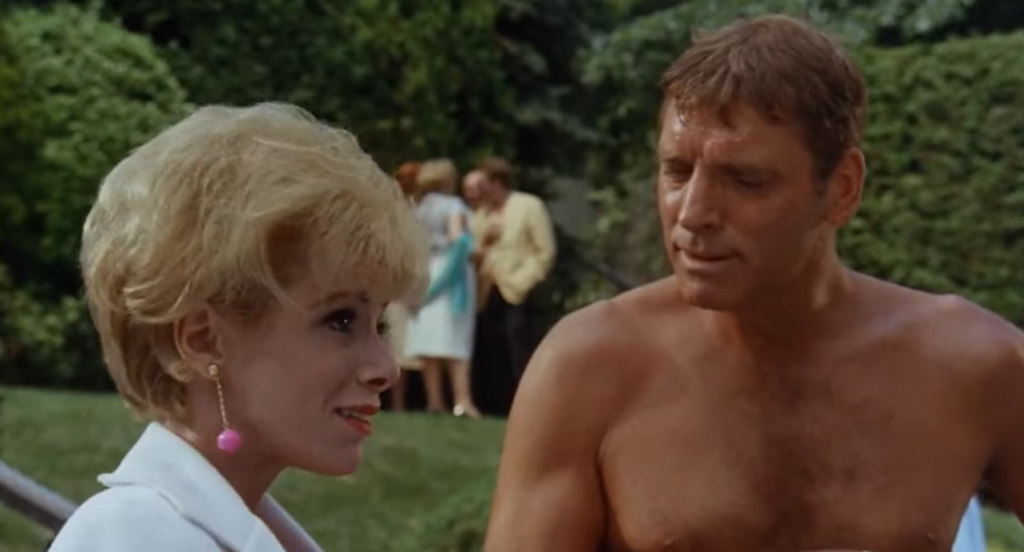
Notable Performances, Qualities, and Moments:
- Burt Lancaster as Ned
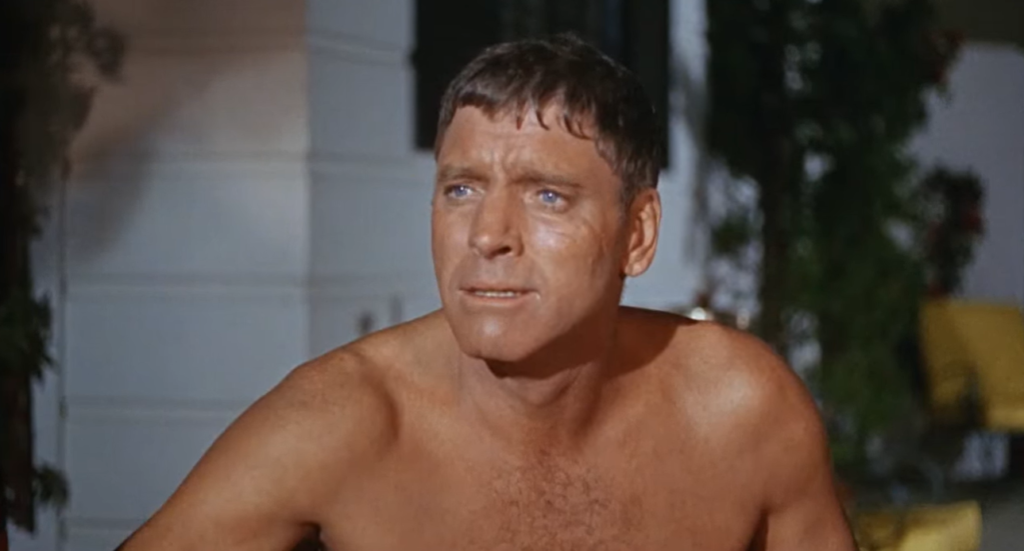
- David L. Quaid’s cinematography

Must See?
Yes, as a uniquely told cinematic story. Listed as a Cult Movie in the back of Peary’s book.
Categories
Links:
|
